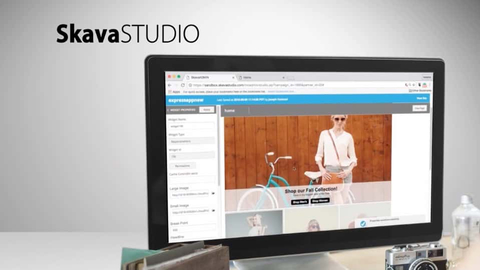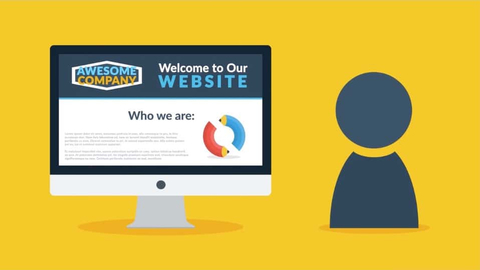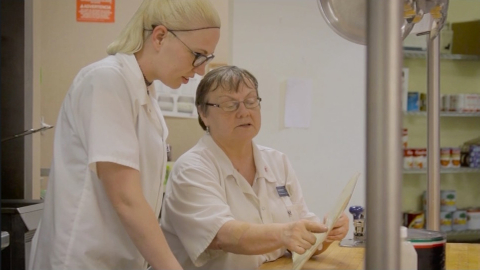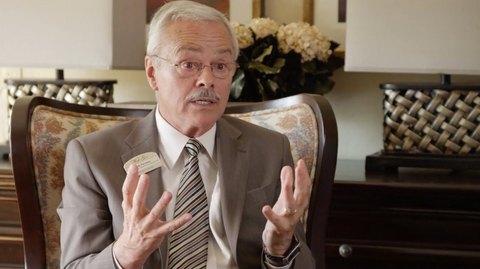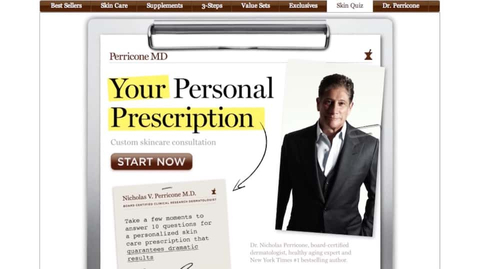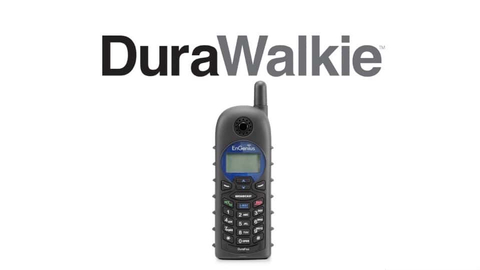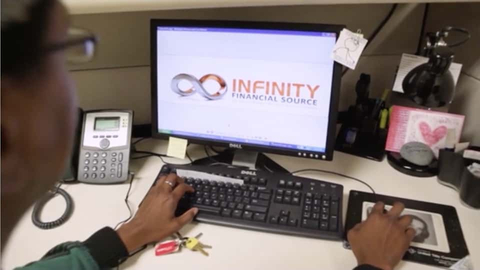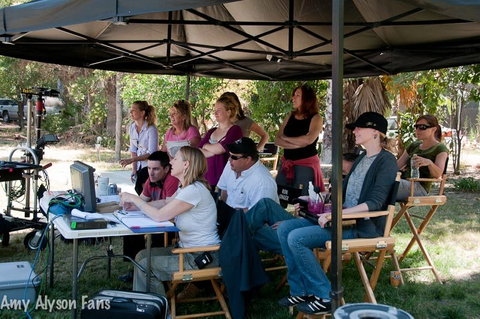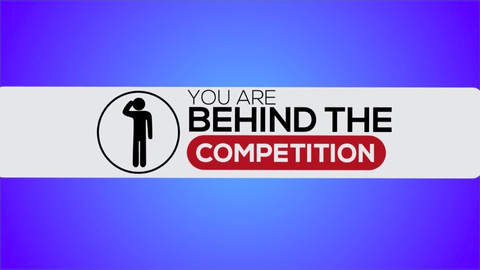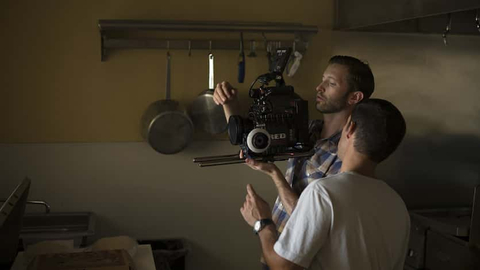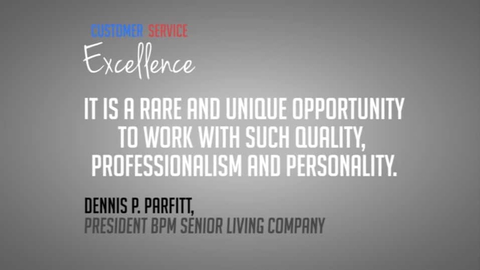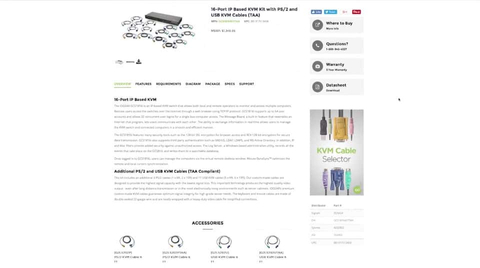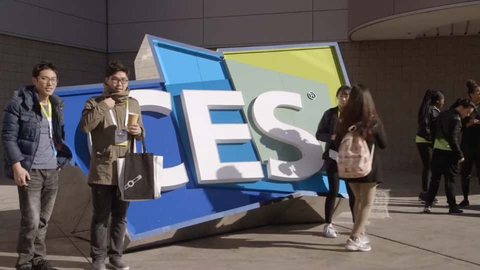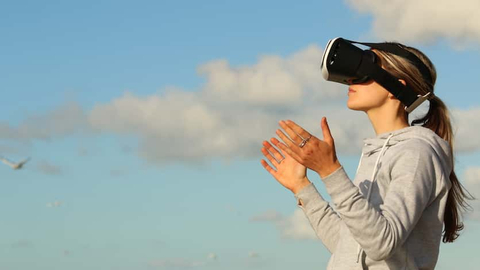Blog
AI in Video Production
Relatively speaking, AI video creation is in its infancy still with perhaps the most famous example being Sora AI Video Generator, which is an OpenAI video generator that garnered a lot of media attention for some of the creepy imagery spit out from user prompts. Despite strange faces, extra limbs, or almost surrealistic interpretations of user text prompts, AI video creation is only going to improve. For all of us in the film industry, the response is a mixture of curiosity and terror. Could AI threaten our livelihoods and replace our jobs? The knee-jerk reaction is to reject new technology if it could be a threat, but the wiser approach is to embrace new technology as merely tools in the creation of human-directed art and marketing videos. Ultimately, people connect with other people. Sure, maybe one day an AI video generator could spit out a 30 second Taco Bell commercial with all AI-created “humans” and no camera being involved at all, but even then, the commercial has to be specifically designed to appeal to consumers — actual humans, not AI creations.
At present, the best use for AI video creation tools is to make small clips used in larger, human-created projects or for throw-away social media engagement videos. For instance, platforms like Pictory.AI can take a script or article and turn it into an AI-generated video complete with stock footage, AI-generated voiceover, and text. With how SEO favors videos over text, there’s something to be said for throwing up easy-to-create AI videos of a press release or something along those lines instead of just a wall of text. The results are decidedly mixed, though, with a lot of the AI-generated results needing some massaging and manipulation to come across as useful marketing pieces.
moreVideo Production Packages
When considering your company’s video production needs, eventually the discussion arrives at which package will maximize your value and minimize the cost. Typically, video production companies offer a variety of “set” packages that include the number of hours of filming required, length of the deliverable video, crew involved in production, and even the equipment used for the project. On more sophisticated videos, package pricing becomes impossible because of the highly customized needs for the video such as casting, actors, locations, effects work, specialized gear such as a slow motion camera, underwater videography, or special permits for filming in sensitive locations (seaports, airports, freeways, etc.). Your job as the marketing expert is to figure out what you need from the video, then let the video production company help decide what package is right.
Basic Vs. Custom Video Packages
For our clients, we typically customize quotes based on our two basic packages, which are a half-day shoot and a full day shoot. From there, we can determine any additional needs though our typical full day shoot package is sufficient for the majority of our clients and includes every professional detail for a nice finished video. With custom video production packages, the price and what’s included is determined after careful discussions with the client figuring out the exact details of the video. For instance, the script or concept may dictate a location rental is needed, four actors have to be hired (thus a casting director involved), additional crew will be needed for higher end lighting and production, a makeup artist might be warranted, and an on-set director / producer to help make sure everyone is on the same page and the time is maximized to deliver a great finished video.
moreFinding an Austin Video Production Company
When searching for an Austin video production company, marketing professionals may want to consider a company that has filmed all over Texas in almost every city large and small, from car dealerships to senior living communities to airport terminals to logistics facilities, many of them in Austin. At JLB Media Productions, we believe in a specialized approach to video production that meshes an agency approach with the single owner-operator approach. With marketing agencies, video production is one service they offer, but is often highly marked up because of expensive office space, many employees, and generally high overhead. With single owner-operators, you’re asking one person to be the best possible videographer, the best editor, the best customer service representative, and the best marketing specialist. We believe in keeping our videos affordable to clients while still having a key professional to handle each aspect of the video creation process.
Our Fundamental Company Tenet
One of the fundamental company tenets is offering video production packages to our clients without travel costs. For many companies, they might be based in one city like Austin, but have a conference in Las Vegas or Chicago, or need a customer testimonial in New York, or they may even have properties spread across Texas and other states. We want to make sure that when we discuss pricing, our clients will pay the same price for the same type of video in another city, which is why we’ve spent more than a decade building a talented and trusted network of videographers. Many of our videographers have been shooting for us since early in the company’s history, some have changed markets and continued to work with us, and our strong bond with our production talent helps us assure quality videos time after time.
moreFinding a Chicago Production Company
Searching for a Chicago production company that can provide reasonable video production pricing and videography rates? JLB Media Productions has shot aircraft terminals, commercial office buildings for CBRE, senior apartments, assisted living communities, and worked with major Chicago-based companies like Grant Thornton to handle their video needs. Whether you’re looking for event video production, virtual tours, product demos, or even training videos, our team can assist you in creating the perfect video and ideal marketing asset. With new clients, our first priority is learning what purpose the video is intended to serve so that we can better tailor the video production pricing to meet their needs. We offer several standard package prices, but can design a custom quote for more sophisticated video needs.
Included in the discussion of target audience and delivery methods (social media, company channels, etc.) is figuring out how we can communicate your message in the most effective way using our decade-plus of experience in the industry. As a pioneer in online business-to-business video production, we have shot more than a thousand videos nationwide for clients in all industries from senior living to commercial real estate, technology to medical care, and financial services to logistics companies. Understanding your business and key marketing goals are top priorities for any serious film production company because ultimately video is a tool, used to drive traffic to your property, your Website, or to sell product, engage with customers, find potential customers, and elevate your bottom line.
more10 Tips for Corporate Video Production
- Come up with a general budget range you want to spend. You may not know exactly what to expect, but generally a professional video will range anywhere from $1,500 to $20,000, depending on a variety of factors. More documentary-style filmmaking (interviews with employees and executives, filming at the office or place of business, etc.) will be less expensive than hiring professional actors, a creative director, larger crew, and sophisticated post-production work.
- Find videos online that match the style, tone, or feeling you would like for your video. Maybe a competitor has a video that caught your eye, or maybe a TV commercial you saw has elements that you want to replicate. Whatever the case, finding a few sample videos to send to a video production company can be immensely helpful in communicating your vision.
- Know the audience for your corporate video production. Are you targeting consumers or other businesses? If you’re targeting other businesses, are you focused on their marketing staff? Their IT professionals? Their HR directors? If you’re targeting consumers, what is the profile of your average buyer? The video should generally appeal to the kind of person who is most likely to be interested in your product or service. By contrast, maybe you are trying to expand your marketshare and want to target a new demographic.
- Come up with a rough concept or outline for the video. You don’t need an exact script, but try to come up with the driving force or idea for the video. If you want a highly creative idea and need expert guidance, many production companies have a creative director who can help, but the cost will increase.
- Make sure the video production company you choose has experience producing similar quality videos. You don’t need to choose a production company that has done exactly the type of video you want in the same industry, but you need a company that creates work that matches your expectations. If a company primarily produces cheesy infomercials and you want a high-end video for an innovative tech product, you should keep searching for a better fit.
- Agree to a timeline with the video production company. Your marketing efforts may depend on having a completed, polished video by a certain date. Make sure the production company understands your deadline and agrees to finish on time or, ideally, early.
- Have a point of contact at your company to manage the video production. Although your company may have a handful of people who are involved in the creation of a marketing video, make sure one person takes the lead and communicates clearly with the video production company what is required. The point of contact should be there on the day or days of production making sure everything proceeds smoothly.
- Make sure you collect all release forms from the shoot. If the production company is using professional actors, request copies of the release forms that give your company permission to display their image and likeness on camera. If you are using your own staff or customer testimonials, make sure to collect your own release forms from everyone.
- Ask the production company to deliver a full quality master file. After paying a good chunk of money for a professional video, you should request any and all files you will need for future use, especially the master file.
- Have a plan for where you want to distribute the video. Will the video mainly live on the company home page? If so, you should still find ways to share it on social media outlets through the company channels, on your YouTube channel, and any partner sites that may be willing to share your video.
Creating Facebook 360 Videos for Marketing Purposes
One of the bigger video trends of 2016 — and one of the most fun — is Facebook allowing video postings of 360 videos often created by panoramic photos users generate. For instance, someone can create a 360 video while on a boat in the ocean off the coast of Hawaii and showcase their surroundings in a “wish you were here” type of posting. The videos are immersive and innovative, allowing iOS and Android mobile users to hold their phone up in the air and see a rotating 360 image by moving their phone in front of them. The experience is almost like a window into another world far away, made more realistic by the movement of the video mimicking the movement of the mobile device.
Not surprisingly, National Geographic has used the videos to great effect on their Facebook page to capture beautiful and far away places for their fan base to enjoy. Other companies can use them to engage with audiences, too, even if they can’t showcase the same amazing visuals. For instance, you may want to create a 360 video showcasing a new store display area, or a grand opening of a restaurant, or even a remodel of a local business. Though not necessarily a prime candidate for the production expertise of a corporate video production company, they can form a part of your overall video marketing goals.
moreVideo Request for Proposal Tips
Crafting a quality request for proposal for corporate video production is an essential element of obtaining accurate quotes from production companies. Many executives have experience creating RFPs, but video production requires a special set of considerations that may not come to mind immediately. The usual elements are still essential, like a target audience, basic messaging and product or service details, and details about what you want or expect to see in the video on a general level. Being unsure about many of the details is not a problem, but being unsure about both the budget and the details can create issues with production companies trying to offer accurate quotes. Here are some tips:
- Explain location considerations and needs. If you write, “Interviews with corporate executives,” make sure to include whether you imagine the interviews all taking place at one location or at numerous locations (even different cities?), and whether the location or locations are company-controlled or elsewhere. In other words, corporate offices are available and free, but if you imagine the interviews taking place atop a beautiful rooftop with a view of the city, the production company needs to plan for the costs accordingly. Public locations will also require pulling permits, which can cost varying amounts of money depending on the city and crew.
- Specify whether B-roll footage (for instance, shots of people working, activities, etc.) will use company employees or paid actors. The difference in cost can be immense, not just because of hiring the actors but also hiring a casting director or compensating a producer for the time spent hiring cast. Additionally, consider whether a professional makeup artist and hair stylist is needed for the shoot, or whether it’s an unnecessary expense.
- Think about any special shots you may want in the video. If you imagine aerial footage in your video, indicate roughly what types of shots would be needed. If you like time lapse footage, mention what type of time lapse you envision (city view, activities, a sunset, etc.).
- If props are involved, for instance in a training video or product video, explain whether you are providing them or the production company needs to provide them. If you want to picture someone driving, will the car be a company car? A personal car? Will the production company need to rent a car of a specific type?
- Think about licensed content and avoid requesting it unless your budget is high. If you want to use a famous song, it will be very expensive most likely. If you want to show video game footage or movie footage, clearance may be both expensive and time-consuming. Many times, a company is better off securing their own clearances rather than paying for the clearance and the markup that a production company will charge.
- Be detailed about any graphical elements. If you want your logo animated, indicate your desire on the RFP. If you imagine multiple segments of motion graphics, try to be clear about their rough length and details.
- As much as possible, always provide extreme detail. Instead of indicating, “Demonstration of product features,” write, “Employee holding the product and explaining its features with close-up shots, text reinforcement of messaging and benefits, and creative lighting.” The final detail lets the production company know you don’t want a down-and-dirty job, but glamour shots of the product.
If a Picture is Worth a Thousand Words, What is a Video Worth?
If a 30-second commercial is rendered at 30 frames per second, then based on the unscientific assessment that a picture is “worth a thousand words,” the commercial would be worth almost a million words! What is it that makes video such a valuable tool for communication, and why is it that it has such a significant impact on websites?
How Does Video Differ From Photos?
Humans have highly developed means of communicating with one another and understanding the world around us, and visual stimuli are only one element the brain will process. Nonverbal cues such as body language and environment are just as important, if not more so, when the brain processes information.
Video helps to satisfy the brain’s desire to understand more about something because it creates a sense of dimension, has movement, incorporates sounds and allows viewers to see nonverbal cues such as facial expressions and emotions. In contrast, static images present a subject in a narrow perspective, providing few additional clues to meaning.
Why Does Video Work?
You have probably learned about the different styles of learning, such as visual, auditory and kinesthetic. One of the reasons that video is such an effective medium of communication is that it utilizes both visual and auditory elements. Educators have long known that the most effective teaching styles incorporate both styles of communication, which is why a wise college professor will use lecture, reading and live presentations to teach concepts to students.
more8 Ways to Use Video Effectively on Your Website
You have probably heard that video is how to differentiate your website and establish a brand, but have you thought about where and how to use it? The beauty of using video on your website is that it is incredibly flexible and customizable. There are few rules. Unlike television, you do not have to fit your video into a certain block of time, so it is an enticing medium to express yourself and tell your business story.
If you are looking for some ideas on how to incorporate video into your website, consider trying one or more of the approaches below.
1. Use it as a personal introduction
The Internet is notoriously impersonal. Showing your face to the world and introducing yourself and what you do can be a powerful way to humanize your online presence. When an online visitor sees your face, he or she will make subconscious assessments that help to determine whether you are trustworthy and authentic.
2. Highlight and demonstrate products and services
Video demonstrations help your website overcome the inherent disadvantage that comes with selling products on the Internet—the fact that a buyer cannot put his or her hands on a product. The two most popular approaches to showcasing products are to film a live demonstration or provide a 360° view. Live demonstrations tend to be the most effective approach because the viewer learns how to use the product.
moreCorporate Video SEO Benefits
Besides being valuable marketing pieces, corporate video production can help boost your company’s search engine optimization (SEO) efforts. Since video production for marketing purposes is largely about attracting more customers, gaining SEO benefits from your corporate videos is a no-brainer. Let’s take a look at some statistics to demonstrate another value that video marketing has for companies’ marketing efforts:
- YouTube is the second largest search engine, behind Google (and owned by Google), which means it ranks ahead of both Yahoo and Bing for user searchers. Placing your video on a company YouTube channel gives you additional opportunities to reach customers.
- A comScore study found that Website visitors stay on a page two minutes longer when it has a video. The average time visitors stay on a Website impacts its page ranking, which is essential for excellent rankings on Google. The faster visitors “bounce” from a site, the less relevant Google thinks the page is for the user’s search query.
- Brightcove found that videos posted to social media were shared 1200% more than both text and pictures combined. Increased shares can lead to increased likes and engagement with a company’s social media channel, which in turn improves traffic to the Website.
- Casey Henry at Moz states that having a video compared to just text increases the number of linking domains to a page by three fold. Because visitors prefer videos to simple text, they are more likely to link to the page. Referring domains is a critical element of high search engine rankings.
- Marketingland found that 62% of Google universal searches include videos, which are displayed at the top of the search results. With most searches showing videos, chances for ranking improve by using both text-based pages and video landing pages with descriptive text.
- aimClear found that video search results had a 41% higher click-through rate than text results. Not only are videos more likely to rank highly, but they’re more likely to generate traffic for a company’s Website.
National Video Production Company: Customer Case Study
National Video Production Services for Large Corporations & Companies
Senior Lifestyle operates senior living communities in more than half of U.S. states from coast to coast. As a result, their marketing and training divisions have a lot to handle not only on a local, community-specific level, but in standardizing operations and quality control across the portfolio. Operationally, a company could choose to let each individual community figure out their own marketing needs and hire local videographers, but the results may vary wildly. Strategically, most companies with numerous locations want to maintain certain high standards that are followed by each location. The goal is not only to assure similar quality and customer service from every location, but also to make sure the marketing goals align with corporate standards. A company like Senior Lifestyle is the perfect fit for our national video production company because we built JLB Media Productions to serve clients with video needs nationwide. For single-location businesses, choosing a local video company often makes sense especially for low budget productions. For a company like Senior Lifestyle with many dozens of properties spread across the United States that has high quality standards, a national one-stop video agency is the perfect fit.
moreBenefits Of Being a National Video Production Company Based In Los Angeles
Your business certainly has a plethora of options when it comes to choosing video production services. But how do you know which video production company is the best for your needs?
At JLB Media Productions, we have produced more than 1,000 professional videos for businesses across the country in 93 of the top 100 U.S. metro areas. Much of our success comes from being a national video production company based in Los Angeles.
Today, we’d like to help you better understand the benefits of being a national video production company based in Los Angeles and how it helps us best suit your company’s needs — no matter where you are in the United States!
Connections
There is no question that Los Angeles is the unrivaled location for video production and creative talent. While you may know Los Angeles for its major role in the production of television shows and movies, those areas are far from the only ones. Being a national video production company based in Los Angeles affords us the fantastic connections and relationships with the most talented professionals in the industry, many of whom also call Los Angeles home. Our network includes more than 100 talented videographers nationwide. These connections and the close proximity allows us to produce videos of exceptional quality, all while keeping the cost down for you!
morePros and Cons of In-House Video Production
A terrific-looking video is an extremely powerful marketing tool for your business. For one, it is a vital marketing element that you can utilize across platforms, from your website to your social media presence and beyond. But you only achieve successful videos through quality video production.
Corporate video production is just one of the many areas we specialize in here at JLB Media Productions, tapping into our wealth of experience and resources to provide our clients with the top-notch video production services they should expect.
However, we also understand that some companies may have the size and scope to consider bringing video production in-house, so today we broke down the decision into a basic pros and cons list. While there are benefits to each side, a business should carefully consider which route is best for the long-term success of the company. Besides, JLB Media is always here for you!
PROS
1. Volume
If you think your company is going to dedicate lots of time and resources toward corporate video production for any number of goals, then in-house video production might make sense. Once you have space, staff and equipment needed, you can make as many videos as you need.
moreFilming Commercials: Studio Versus On Location
With commercial filming, one of the first considerations with any concept is whether to film on location or in a studio. Of course, some concepts naturally require location filming, like cars driving through a city or in the country, for instance. Other concepts are more open-ended, like one set in a store or a living room. With lower budget commercials (i.e. not national commercials), a company will usually choose to film in their own store to save money. Likewise, finding a living room of someone’s house to film is much more cost-effective than building a living room set in a studio. There are advantages to filming in studios, though, and sometimes it makes the most sense overall.
The primary reason large production companies often choose to film in a studio versus on location is because of the greater control they have over every element of the production. Soundstages not only have standing permits, which means no special permit requirements, but they also have control over the sound in general of the area. Filming in a house somewhere requires permits from the city for street parking of numerous production vehicles, it has the potential to be interrupted by neighbors’ noise (barking dogs, car alarms, etc.), and it provides a more constricted environment for lighting.
moreHiring a Director for Corporate Video Work
The vast majority of corporate video work doesn’t require a trained or skilled director, primarily because there are no actors involved, but also because the budget doesn’t usually allow for it. In filmmaking, the director makes or approves all key creative decisions and works closely with department heads like production design, director of photography (cinematographer), and wardrobe, besides directing actors. Corporate video production often involves interviews and B-roll, neither of which specifically requires a creative director. In the corporate video world, you’re more likely to find videographers who double as the director on set, helping the interviews go smoothly, making decisions about which shots will look best for B-roll, and helping move the day along. The “one man band” mentality predominates, not because it’s the best way, but because it’s the cheapest way.
When does a corporate video need a director? The simplest answer to when hiring a director is required is whenever actors are brought aboard. While you can certainly take the risk and go without a director on set, letting the actors do their best and the videographer record whatever they do, it’s not advisable or highly professional. Not only are actors more comfortable with having a director who helps focus their performances, but a videographer may be equally uncomfortable trying to give advice or feedback to actors. They are not compatible or even related skills whatsoever. Videography is a technical skill highly dependent on camera knowledge, lighting temperatures, camera gadgets, and a general sense of painting with light. Directing involves tapping into inner emotional realities and bringing forth believable performances from actors as well as having an eye towards the bigger picture and how it will ultimately fit together.
moreSpecialty Filmmaking Tools for Corporate and Commercial Videos
In the world of big budget feature filmmaking, almost any type of specialty tool is available to capture the perfect shot. From specialty slow motion cameras to underwater housings to action cameras and car mounts, helicopter shots, and cranes, whatever a filmmaker can imagine, gear exists to help make his or her vision a reality. In the world of corporate filmmaking, a few tools are more likely to be considered for their relatively low impact on the budget but immense leap in production value. Though high budget commercial filmmaking includes all of the fun toys (techniques like “bullet time” from The Matrix and many early CG efforts were pioneered on commercials), corporate video work can incorporate a few fun tricks and tools as well.
The recent rise of action cameras like the most famous GoPro line allows filmmakers to capture exciting shots by putting the camera directly in the action. From helmet-mounted shots on a snowboarder or paraglider to inexpensive car-mounted cruising, the GoPro allows for Ultra HD filmmaking without heavy production costs. Any brand that wants to emphasize the excitement of their product in action can take advantage of something like a GoPro for capturing tough-to-film footage on the go. Creative videographers can find many ways to make use of GoPro cameras for filming story segments and product demos, so they need not be limited to outdoorsy products and extreme sports videos.
moreUsing Humor in Corporate Videos and Commercials
Comedy is a great way to engage audiences and hook them as part of an effective marketing video, but it also has pitfalls to avoid. Humor that one person finds hilarious, another person finds offensive. Especially in today’s world, the battle between PC social justice warriors and everyone else means many topics of humor are best left to late-night comedians and avoided by corporations. One need not look any further than Pepsi’s disastrous Kendall Jenner commercial, which was immediately pulled, to understand the dangers of comedy when mixed with politics. While politics is almost a definite subject to avoid, it’s not the only subject around which brands should tread carefully.
Playing around with gender comedy is potentially dangerous, especially when a brand assumes specific gender roles and the humor is based solely around such assumptions. For instance, “look at the silly girl trying to hunt with a big rifle” or “look at Mr. Dad struggling to take care of the kids” are just dated comedy tropes that simply don’t work in the 21st century. Not only will a small but substantial group of people oppose the depictions because of social justice reasons, but another group will be offended because you’ll make them feel inadequate in some way. A great stay-at-home dad shouldn’t feel ashamed or embarrassed by what he does for his family while watching your commercial, any more than a lady should feel less ladylike because she enjoys hunting or shooting at a range. Why alienate potential customers when you don’t need to use such humor to sell your brand?
moreViral Video Distribution Strategy
When trying to promote a viral video, of course you can only control its popularity to an extent, but you have to start the ball rolling, so to speak. Even the best videos need an initial push and a small base from which to grow. While some videos go viral seemingly randomly, others are carefully planned and can attain solid success levels through cultivating the right distribution strategies. As with any video, the normal rules apply of making sure you place the video on every network possible from Facebook to YouTube to Vimeo and your company’s home page, though your best viral results will likely come from YouTube and Facebook because of the massive group of users on each site.
When you’re trying to come up with a distribution strategy, first consider your intended audience, then consider where they are likely to congregate. If your video involves pets, for instance, you could probably find hundreds of pet-related Facebook groups and pages to post the video. Rather than spam other peoples’ pages, though, use diplomacy and charm to secure authorized posts. For instance, on our Mr. Formal “James Blonde” commercial, I wrote private messages to the administrators of several James Bond themed Facebook pages and each of them were friendly, even excited, to post the video to their page. They gave the project legitimacy by posting it themselves, as the group administrator. It took me barely any time to find the groups and compose the messages. Whatever your niche, you can find a bunch of interested groups on Facebook that will be receptive to your video if it’s well done, shareable, and perhaps funny.
moreCorporate Video Duration and Structuring
Most people have seen many marketing videos online, whether short commercials or longer product demonstrations, so intuitively most marketing professionals probably have a good idea about video length. At the same time, statistics help inform the proper structure and length of corporate videos using known data points. If most videos are between 30 seconds and 5 minutes, is there a sweet spot in duration? Does the length depend on the product or service being offered? Does the length depend on the type of video? Video production is a relatively expensive proposition, so you want to make sure when you commission and create a video that you’re getting the best value for your marketing dollars, which means tailoring the video length and structure to your audience.
Wistia, an online video platform, always publishes the best, most comprehensive research data about video statistics and engagement. They have a massive data set from which to draw, which means their information is highly actionable for marketing professionals. Through more than 1.3 billion plays of 564,710 videos, they found that the ideal video length was almost exactly two minutes. After two minutes, the drop-off in engagement was significant. For the purposes of their research, “engagement” means viewers who started the video and finished it. The best takeaway is the similarity between engagement numbers for a 30 second video versus a 90 second video, or any other length below two minutes. In other words, don’t worry much about whether a video is 70 seconds long or 90 seconds long; just convey the information you need and don’t obsess over a couple of seconds. Viewer engagement for videos under 2 minutes is about 70%.
moreCorporate Videos for Companies With Numerous Locations
Many companies have to plan their video strategy by thinking about whether they should produce general brand videos or produce specific videos for each of their locations. The decision may come down to budgeting, but if budget is less of a concern than practicality and marketing goals, then consider some pros and cons. If you run a business with numerous locations, here are some considerations:
- Is each location noticeably different, not just in layout but in service offerings? If so, you may want to advertise each location separately to emphasize its unique services. If each location is more or less the same, except for inventory and space, you are probably best served by a general purpose video for the brand and your stores as a whole. With nationwide department stores, they have no choice but to focus on the general brand as individual video marketing makes no sense.
- Are people familiar with your brand having multiple locations? If not, consider one combined brand video showcasing your different locations, educating consumers about the options they have for shopping your brand. You could dedicate just the last section of the video to your multiple locations.
- Does the style and character of each location feel different enough to warrant separate videos? In many cases, your service offerings may be similar (such as senior living), but the feel of each location is quite different. You may want to emphasize the uniqueness of each location without lumping them all into one video that ends up not feeling like any of the locations.
Fast Corporate Video Production
Typical turnaround time for most corporate video work is between 6 and 8 weeks, but you don’t have nearly as much time. You need a product launch video or a special company video to play at your conference in just a few weeks. Can you make a video production happen from start to finish in just a few weeks or are you out of luck? Luckily, if time is a concern, you can drastically shorten the process but only through careful focus, hard work, and the right production company. To put your video on the fast track, you need to shorten the pre-production process substantially and you need to have a rush edit of the footage or you won’t meet your deadlines. The actual production is the easy part, but the planning is where you need to save the most time.
In Hollywood, as well as probably the greater business world, filmmakers have a saying that you get to choose between two of these three options: fast, good, and cheap. You can have a high quality, cheap video, but it won’t be fast. You will be put last on the list of priorities and be at the mercy of someone else’s schedule because you’re not a well paying client. You can have fast and cheap, but the quality will suffer because you’ll probably be hiring a film student or amateur. What you’re looking to achieve is fast and good, but it won’t be cheap. You have to pay a premium to a production company to come in at the back of the line and push your way to the front, which requires paying more than their other clients. You have to obtain a rush edit of the video, which not only means overnighting the footage from wherever it was shot to the editor, but also paying enough so the editor can work overtime to complete a first edit. Whenever you tell a production company you need a video way faster than their typical time table, you’re asking them to undergo additional stress and risk that they won’t be inclined to do without financial incentive.
moreWhen to Pay for Two Cameras
Narrative feature films and high end commercials typically use only one camera, along with most dramatic scripted TV shows, so why would a corporate video need multiple cameras? The simple answer is that many corporate videos, especially event videos, are more similar in nature to reality TV, which often uses many cameras, even dozens of cameras, to capture all of the action. Though the vast majority of our shoots only have one camera, we have frequently used two for interview purposes and occasionally relied upon several shooters at events as well. Hollywood feature films, except for during action sequences, often avoid using more than one camera because the lighting is specifically set up for a single camera at a designated location. With corporate interviews, though, the subject isn’t moving and the lighting can work perfectly fine from two different angles if arranged carefully.
One of the key benefits of filming an interview with two cameras is the ability to cut in and out of different takes more readily without cutting to B-roll. If you have a single camera interview and the interviewee flubs a line half-way into the take, you either have to use an entirely different take, or cut to a B-roll shot, then back into the second half of a correct take. With multiple camera angles, you can cut out of the take from Camera A and into a better take from Camera B flawlessly. The ability to zip around in editing makes for smoother interviews in many cases, especially when the B-roll is limited or when the client wants more focus on the interview itself.
moreProducing Corporate Videos
Corporate video work at lower budget levels is not much of a producing challenge compared to feature films or even short films, but making sure the process runs smoothly is part of what makes a production company worth hiring. Producing a video production of any kind involves several basic elements, the first of which is an examination of the script or concept that is the basis of the whole project. In the filmmaking world, a script is like an architectural blueprint that helps guide the process, but in corporate videos a script is often missing, so how do you proceed? Much more so than narrative storytelling, corporate video producing starts with a finished idea and works backwards. In other words, a client wants a video similar to the one completed for ABC Company, so the producing process works by figuring out the similarities and differences between an already-produced video and the current project.
If a client expresses interest in creating a business overview video to post to their Website, the production company asks a series of questions that are relevant first to budgeting then to producing the video itself. How many people will be interviewed? Where will the interviews take place? Can all of the interviews be shot on the same day? Will B-roll (additional video elements that play along with the interview commentary) be recorded at the same location or in multiple locations? After a discussion with the client, we gather the details: 4 interview subjects from the company, filmed in one location at their corporate office, with various B-roll involving other employees and business around the office. Only part of the full picture comes together from the previous information, though.
moreStoryboarding Videos
Though not necessary for the vast majority of corporate video work, storyboarding is common practice in commercial video production. In the commercial world, storyboards are usually referred to simply as “boards” and are a way to demonstrate visual ideas to the client for approval before a shoot occurs. Because of the immense amount of money spent on commercial production, the advertising agency wants to make sure the client fully understands and signs off on any ideas before hundreds of thousands of dollars are spent on producing a finished commercial. As part of the process, once the general concept for the commercial is approved, boards are created to show a shot-by-shot look at the flow. Understanding the value of storyboards is a good way to understand whether they are the right way to proceed for smaller budget corporate video work or general commercial work.
Storyboards have multiple purposes and uses, depending on who is reviewing them and who they are intended to impress. When designed for clients, they are primarily intended to represent a concept visually for fuller understanding of the flow of the commercial or corporate video. Not everyone can read a concept on paper and visualize how it will look roughly when shot, so being able to create storyboards allows everyone to be on the same page without any big surprises. Even on more limited budgets, storyboards can be valuable to communicate information quickly and avoid unpleasant surprises down the road.
moreHow To Use Videos Effectively During The Holiday Season
For many people, the holiday season is a special time of year. We get nostalgic, we work to reconnect with loved ones, and our hearts are just a little more receptive. To effectively use videos during the end-of-year holiday season, keep the following in mind.
Start Early!
Whether it’s related to Thanksgiving, Christmas, Hanukkah, Kwanzaa, Diwali, Winter Solstice, New Year’s Eve, or any other winter-time holiday (or summer-time festivities, if you’re south of the equator), it’s important that you launch your holiday season video production push early. Once Halloween is over, everything moves quickly. Plus, a lot of employees are gone, which can slow down production. The earlier you start, the better … but at the same time, it’s never too late. Get started today! Just be realistic with your schedule. You may still be in time for the holidays, or you may want to aim for the New Year.
Get Creative
As we’ve mentioned before in previous posts, people love stories. During the holiday season, you have the opportunity to get creative and craft stories through your promotional videos that touch the heart and lift the spirit. It’s a time when you can have fun with your videos while remaining culturally sensitive and respectful to your audience. Whether you have thirty seconds, two minutes, or an hour or more of video time to work with, you can tell a heartwarming story to share your brand or uplift your employees.
more5 Ways Technology Companies Need to Leverage Video Production
If you’re a marketer or an executive at a technology company, you need to know that leveraging your video production efforts is in your company’s best interest. Here are five effective ways to accomplish this.
Product Demo
Your company will benefit from videos that showcase your products and services. If you offer a complex product with features the end-user may not be aware of, a product demo video is a must. You can convey a great deal of information quickly and clearly through a visual demo.
With a product demo, you can accomplish the following:
- Highlight features that make your product stand out;
- Show how your product is better than what competitors offer;
- Generate excitement for your brand;
- Instruct the user on how to use a specific product; and
- Offer solutions so viewers can see why they need your products.
Your demo video is your chance to sell your product by highlighting the best features and providing enough technical info without overwhelming the viewer. It lets viewers understand why they need this, and how to get started. In other words, it’s the perfect launching point for anyone interested in your product.
moreA Marketer’s Guide to Creating a Software Demo Video
The other day, I downloaded an audio enhancement software program to use the trial version. However, without much support on how to use it, I quickly found myself frustrated, and instead of purchasing the software, the company link sits in my Bookmarks folder in marketing limbo.
Sound familiar?
If you’re worried that your software product might be suffering a similar fate, it’s a great opportunity for you to create a software demo video. Done well, this will keep your customers engaged, show them a vision of what they can accomplish, and get them to understand the value of what you offer.
In this post, I’ll cover how you can create high-quality software videos, enhance your customers’ understanding of your software, and get more conversions.
Step 1: Choose a video production company
If you have an internal video department, this step might be as simple as submitting a video request, but if you’re going to outsource this job, you’ll need to take into account a number of different factors to ensure that you’re getting the highest quality work for the best price. We recommend that you ask the following questions to any potential video production services provider you’re considering.
moreInsider Tips: Pitfalls to Avoid When Choosing a Video Production Company
Avoid Choosing a Company with a Limited (or Inexistent) Portfolio
This is no time for amateur hour. Your corporate videos must be professional and polished, and they need to communicate the right message while reflecting your brand in a positive light. Each video needs to make an impact, and it has to be memorable, with the key points you want to convey getting across to viewers.
It takes a certain level of experience plus a mix of just the right technical, creative, and business skills to produce corporate, marketing, and promotional videos that exude a high degree of professionalism while being entertaining and innovative. A video production company with a limited portfolio, or a company that has no samples to show, is not the right choice. The risk of spending a great deal of money and ending up with poor results is just too great.
The Production Company Shouldn’t Skimp on Creativity
Even if your promotional video is a marketing tool meant to promote your brand and gain a larger following, the creative factor is still important. The video production company you hire needs to work with talented writers, producers, videographers, choreographers, musicians, and other professionals to develop a video that’s more than just a sales pitch. The more creativity that a corporate video production company can infuse into your videos, the more interested your audiences will be in the messages you’re trying to get out. Never skimp on creativity.
moreVideo Production Inspiration For Your Marketing Campaigns
A little bit of cinematography magic will make your promo videos far more engaging and memorable, greatly enhancing your marketing efforts.
Don’t Be Afraid to Get Creative
When it comes to marketing campaigns, video productions can convey a wealth of information in a short time. Here’s an important thing to remember: if you’re having fun making the video, chances are good that viewers will have fun watching it, and that element of fun will help make your message stick. So let your guard down, and start getting creative!
It Begins With A Story
Your promotional video has to tell a clear story in a succinct format. You only have a few seconds or minutes to get your message across, so the challenge is to use that brief time to visually convey a story viewers will associate with your brand. Start by listing the main points you want to convey, and remember that less is more. Your main message should be woven throughout the entire promo video, and you can add one or two supporting points, but keep things simple. Try not to stuff too much information into one production. Stick to the most important takeaway points, and then tell a story that highlights these specific details. You can have the most polished video ever made, but if it doesn’t present a cohesive story that hooks viewers in, it’ll be quickly forgotten. Well before writing and shooting any marketing videos, brainstorm possible ideas and outline plot lines for inspiration.
moreCommercial Television Production Costs
While the cost of commercial television production is widely known to advertising agencies and production companies, most outside marketing professionals, especially for small to mid-sized businesses, have very little idea about the costs involved. As with any advertising, the range is enormous between the lowest budget and highest budget examples. At the lower end, many or even most cable networks will offer “free” commercial production if a business purchases a certain volume of TV advertising. They build the costs of producing the commercial into the overall package pricing, which also results in almost always laughably amateur hour productions. The difference between typical local TV ads and national ones is like watching an NBA player take on a grade school kid. Examining the true costs involved in different types and levels of media production is a great place to start when looking at how to budget properly.
For a local TV commercial production, the business is often of local interest only, like an HVAC company, a dental office, a furniture store, or a restaurant. The biggest difference viewers will notice is the focus of local commercials on offering “deals” or mentioning pricing, specific services, and information. Put simply, local commercials create awareness, whereas national commercials reinforce brand power. Viewers probably don’t know about John’s HVAC, so the local commercial focuses on their commitment to service, quality, and affordability. Everyone knows Coca Cola, so the national commercial is just a reminder to “open happiness.” The biggest difference is creativity, which also impacts cost.
moreWhat Separates Low Budget Corporate Videos from High Budget Profile Pieces
Many of our clients think of JLB Media Productions as a great budget option to deliver quality, affordable corporate video production services for their businesses. While we enjoy the opportunity to produce all types of corporate work, we also like to emphasize that our creativity is limited only by the budget, not by our experience. When you think of a restaurant chain like Olive Garden, you probably think of solid, affordable Italian food, nothing special, but not a bad option for a regular meal. When you think about Safeway, you maybe think of a regular, ordinary grocery store that will meet your needs most of the time, but nothing fancy like Whole Foods or Trader Joe’s with specialty items and gourmet selections. Every company has its niche, which they either define intentionally, or fall into unintentionally, but with a video production company the key ingredient is creativity.
If a video production company has just one staff member, such as a camera operator who also edits, the company may by design be more tailored to crafting straightforward videos without a lot of bells and whistles. You wouldn’t hire Joe Blow Productions to create your nationwide commercial campaign, for instance. You would hire Joe Blow Productions for your internal company videos, though, because he’s affordable and delivers solid results for the audience. At its essence, though, film is a very different business than grocery stores or restaurants. A grocery store could rebrand itself and change a bunch of their suppliers, reconstruct their stores, and focus on a new demographic. A restaurant could change directions and offer alternative foods, redoing their ingredient lists and recipes. In both cases, the businesses have to alter everything they do to serve a different demographic or need.
more360 Virtual Tours Vs. Professional Video – Why Successful Businesses Choose Web Videos
Making your visitors navigate through fish-eye pictures of model apartments may seem like a nice idea in creating Website interactivity, but it can also be an exercise in frustration for potential customers who just want to push play, sit back, and observe. When you let your visitors choose how they see your community or business, you give them the opportunity to become frustrated, bored, or worse yet, confused. When you have a video, you have full marketing control not only of how information is presented but the manner in which it is displayed. For instance, good use of music can strike an emotional chord with viewers that a fish-eye photo of a room simply cannot, no matter how many times it spins around.
Videos also provide a lot more options, from voiceover and music at the simplest end to actors and spokespeople at the higher end. Are you selling an apartment room, a hotel room, or a building, or are you selling a community, an experience, and a way of life? People are not moved by simple facts or floor plans, but by attempts to form an emotional connection to the material. Compare a rousing speech to a pamphlet, or a beautiful symphony to a sheet of music, or a stale 360 image that first came on the scene when we all used dial-up modems to a beautiful video that shows your company understands its audience.
moreCorporate Video Production on a Budget
As with most video production companies, we have common inquiries from startup companies or individuals who want to create nice videos for tiny budgets. Many times, we have to turn away the smallest potential clients because we cannot do justice to their video for the funds they have, but we always try to come up with creative solutions that could work to create a professional video on a small budget. Low budget work doesn’t have to mean low quality work, but managing expectations is important as is coming up with a proper concept. The biggest issue is when companies want to create a Hollywood-style video on a smaller budget, because many times it will just become hokey or simply be impossible to execute, often leaving the company with no video at all.
One of the best recommendations we have made for our clients is to consider a video using voiceover, stock footage, and brand / product photos they have, sometimes in combination with motion graphics templates we already own or that can be acquired inexpensively. Many motion graphics templates look fantastic and high-end, so just because they’re not “custom made” doesn’t mean the final product has to suffer. By focusing on clever text effects, motion graphics, stock footage, stock music, and voiceover, a company can eliminate the production portion of the video production and achieve significant cost savings while still producing a professional, informative video that relies on creative editing and messaging to succeed.
moreCost Considerations and Budgeting for Video Production
With video increasing search engine rankings and giving a massive boost to front-page Google rankings for companies and their products and services, most companies understand the need for effective video marketing. While videos can play a key role in an overall marketing strategy and be distributed to numerous locations from Facebook and YouTube to the company’s Website, companies have to ascertain how much money can be allocated to video production to achieve the desired result. Most importantly, how much do you need to spend to have a professional video that meets your marketing goals and yet leaves you money left over for other pressing needs? The cost of any video production is based on a number of factors, but best seen as a series of three stages: pre-production, production, and post-production.
Pre-Production Planning
The expenses incurred during pre-production are based around taking a concept or a video idea to a finished plan for production. Pre-production can be as simple as picking a date for the filming, creating a schedule for the day’s filming, hiring a videographer, and dealing with some contracts and paperwork. It can also be much more sophisticated and time-consuming, involving securing locations, crew, talent, and writing a script or detailed outline. The more work a production company needs to do during pre-production, the greater the cost of the video not only because of the time expended but because a large and in-depth pre-production means a larger production as well.
moreCreating Videos to Honor Top Employees
Though corporate video production usually centers around specific marketing goals or sometimes training videos for internal use, another type of video production is focused on creating a better employee culture and honoring top employees through a video. Though on the surface an employee award video may seem a questionable use of scarce marketing resources, the benefits can be much more substantial than initially envisioned. Not only can an employee award video instill loyalty in top employees, increasing retention of talent, but it can instill a company-wide feeling that top management notices and cares about the contributions of its employees. The video can also be crafted as a pseudo-training video for what types of strategies and behavior lead to great results, then shown throughout the company to improve performance.
A typical employee award video need not be expensive or complicated, but rather a simple way to honor the hard work and dedication of your best employees. Ideally, the shoot should be scheduled on a day where the employee can be shown performing regular tasks to capture some solid B-roll, then be available for an interview afterwards. Other employees who work regularly with the award-winning employee can provide additional commentary, speaking about the person’s disposition, hard work, and winning personality. An additional bonus is obtaining interview commentary from people who the employee serves, whether its regular customers, vendors, or residents of a care facility.
moreDeciding Between a Professional Spokesperson or Company Representative
In creating corporate videos, companies are often faced with the decision of whether to hire a professional actor or actress to serve as a spokesperson or select one of their employees to deliver the information and be the “face of the company” at least for one video or video series. Each path has its advantages and disadvantages, which means deciding between the right option depends largely on the company’s marketing goals, budget, and preferences. Taking a look at each option and the benefits and drawbacks is a good starting point for helping you come to a decision about which path serves your needs best.
Pros and Cons of Company Representative
With a company representative featured on camera, you have the advantage of a knowledgeable professional who can speak naturally about the product or service. A company representative like a marketing head probably has delivered many such speeches in the past either informally at networking events, to potential customers, or friends and family or in more formal settings like presentations and client conference calls. Their knowledge and expertise makes them ideally qualified for delivering information, at least on paper.
moreGreen Screen or White Screen in Corporate Video Production
Several of our clients have asked about shooting a spokesperson against a white screen or a green screen, but many people aren’t really sure which one they want or for what reasons. Numerous Web videos, especially informational ones, are filmed against white backgrounds not only for the simplicity of production but also for creating a more focused visual field. Filming against a green screen (or blue screen, in the past) is an entirely different type of process with different end-goals. Knowing which setup makes the most sense for your corporate video depends largely on need, so let’s take a look at both processes and outcomes.
White Screen Videos
Using a white background or white screen allows the spokesperson or actor to be the sole focus of the composition, often removing any possible distractions present in an office setting or a heavily production-designed desk. Shooting against a white background has added benefits, though, in allowing for adding text elements, motion graphics, and even B-roll fields to the sides of the actor. Shooting against a white screen is often the best way to provide flexibility in delivering additional information in post-production because it gives the editor a lot of space with which to play.
moreIdeal Videographer for Corporate Work: Finding The Right Professional
Perhaps the most important aspect of a successful corporate shoot is the videographer who shows up to gather the footage and record the audio. All of the planning that the production company does before the shoot, all of the paperwork, all of the client’s time and planning, and all of the effort that an editor goes through to create a finished video are meaningless if the video quality isn’t good or the audio sounds distorted and poor. Selecting the right videographer for a job is not as simple as just finding “the best” shooter, but rather finding the perfect fit for the budget level and for the project, which is where a knowledgable corporate video production company shows its value.
The first consideration for selecting a videographer should be their creative eye and their diverse set of skills. Can the videographer manage a nice variety and balance of pans, tilts, zooms, slides, and perhaps handheld work that looks professional with smooth motion? Does the videographer have a great eye for framing and focusing his attention on the most visually interesting aspects of a location and its subjects? Do the interviews sound crisp, clear, and look well framed? A great videographer is able to deliver visually interesting footage of almost any location, regardless of what they are shooting. By contrast, an unimaginative shooter will plop the tripod down at random, press record, and be satisfied with mediocre results. Never hire someone whose work doesn’t grab your attention immediately. After watching thousands upon thousands of reels and work samples, a professional producer can identify quality work within thirty seconds or fewer.
moreDo I Need 4K Corporate Video Production?
Without working in video production, many consumers and clients are confused by terms thrown out in the film industry like UHD (Ultra High Definition), 4K, and HD. Because of different standards and even inaccurate labeling, most people aren’t really sure of the difference between each label and what they really mean. On a practical level for corporate video production, should marketing professionals care about the newest video standards like 4K? Though the answer is more complicated than a simple yes or no, the bottom line is most clients won’t benefit from having their videos shot in 4K.
Even the label “HD video” can be misleading because officially, HD is defined as either 720p or 1080p, where the number represents how many vertical lines of resolution exist in the image. As a broadcast standard, the overall picture resolution is 1280×720 of progressively (p) scanned lines. Although 720p counts as HD resolution, few professionals take such a low resolution seriously now for acquisition. “Full HD” refers to 1080p, or a resolution of 1920×1080, which almost every modern camera can record. Sites like YouTube count 720p as an HD resolution, but for playback online, especially on mobile devices, 720p is a perfectly suitable HD format.
morePopular Video of the Week: Sliders 4 Ways
With the ease of sharing videos across social media networks and the Internet as a whole, every week sees the rise of new highly shared video content. Keeping an eye on the trends is a solid way to see what works, what people share, and how videos go viral. Even if a video seems unspectacular or not related to marketing in general, keeping an eye on popular videos is a good way to make mental notes about what people are likely to share. Last week, BuzzFeed’s Tasty posted a video of how to make sliders in four different ways that has received more than 80 million views on Facebook.
The video is a simple tutorial or “how to” for cooking, sped up in post-production with music and text added, that appeals to cooks everywhere. It contains several recipes and shows how to execute them, making the process look easy to do for anyone with basic culinary skills. How is the video relevant to marketing or what can we learn from the massive popularity of a seemingly simple video? Let’s take a look:
- The video would be inexpensive to create, involving one camera, basic setups, and mainly a few hours to do the demonstrations featured. Editing time would be fairly minimal to average.
- The appeal of the video is widespread because everyone likes to eat and many people either cook regularly or would like to learn more about cooking.
- The video is short, running less than two minutes, so the likelihood of people watching the majority of the video or all of the video is high.
- The video has numerous elements that could be used in similar fashion by a variety of companies. A company that sells bread rolls could keep in mind the massive video view total and produce a similar branded video with more information about their product and why their bread rolls make a perfect solution for sliders. A grocery store chain could create a similar video and mention that all of the ingredients can be found at their grocery store affordably, in high quality, and at a location near the viewer. Any manufacturer of individual ingredients like a meat producer could feature their own products in such a demonstration, cleverly disguised in a “how to” video so that it doesn’t feel like marketing, but like helpful information to cooks everywhere.
Reduce Costs Through Effective Training Video Production
Most corporations, especially medium to larger businesses with numerous physical locations, have frequent turnover throughout the company. While turnover is normal, it also leads to increased training costs and frequent frustrations with new employees not properly following the company’s standards, practices, and values. Training new employees is both expensive and time consuming, but training videos can help companies gain an edge in company-wide education and training at a fraction of the cost of in-person physical training. Sending key employees to numerous facilities repeatedly becomes expensive and unrealistic, especially given the greater responsibilities and higher-value tasks that key employees often have to undertake. Having a series of training videos for employees to view allows top employees to pursue their everyday activities while also educating new hires in the company’s proper standards and procedures without leaving the corporate headquarters.In days past, training video production could be both expensive and just as time-consuming as in-person training, but with proper coordination and selecting the right company for the job, training videos can be affordable and effective. Companies have a variety of tools at their disposal with training video production, not just live-action videos and staged scenes, but animation-driven pieces, screen capture videos, and simple demonstrations by key employees that need not cost tens of thousands of dollars to develop. Even better, as standards and practices change and evolve, training videos can continue to be updated without being completely recreated for a fraction of the cost and frustration of sending key employees on company-wide road trips.
moreRefreshing an Old Video or Filming a New One
Years ago, your company commissioned a great video, but enough has changed about your company or about the product or service in question that you know you need to update the video or redo it completely. Reasons for redoing a video differ, but often are necessary because of remodels, new employee hires, updated product lines, new service offerings, a change in company marketing strategy, and unhappiness with significant elements about an older video production. As with any company, though, your marketing budget is tight and the last video was expensive. Should you refresh the video or redo it completely? Each path has pros and cons, but considering all of the factors involved will help you make the right decision for your company.
The obvious first question — though it still has to be mentioned — is whether your current video is professional, well produced, and overall a solid piece of work. Take a well shot apartment tour video, for instance, perhaps the lobby has been updated, paint refreshed, and landscaping improved, but many of the areas like the fitness center, model units, and exterior overall look the same. Sending out a videographer for two hours to gather updated shots of whatever has changed and integrating the footage into the existing video makes perfect sense as long as you have the original raw footage, editing file, and other data needed for the refresh. If you are still working with the same production company, maybe they have the files still, making the refresh easier and less costly.
moreSetting Up the Perfect Interview
The key to many great corporate videos is great interview footage, which is a mixture of the right subject, the right setting, the right framing, and most importantly proper audio. Interviews are the toughest and most important part of most corporate video shoots because the people being interviewed are not trained professionals, the locations are often not ideal from an audio perspective, and most corporate videos lack the budget for a production designer let alone a production design department with set dressers and rented items to beautify a space. Though challenging, like most aspects of corporate video production, gathering quality interviews is largely a matter of careful planning.
The first critical element to obtaining great interviews is selecting the right subjects. Our company has shot hundreds of videos with interview commentary and the best ones with the strongest quotes are always the videos where our client chose great subjects. As with film production in general, much of the battle is won during pre-production, not only in selecting the right interview subjects but in crafting the right questions. To create a list of the best possible questions, first think about what answers or comments you want in the finished video.
moreThe Importance of Telling Your Business Story
There seems to be a lot of talk about the importance of branding, but little substance about what comprises a brand. Ultimately, perceptions define a brand. Essentially an extension of the human dynamic of relationships, branding is about feelings, trust and respect. Telling the story of your business is one of the most powerful ways to stir emotions, build trust and immortalize your brand.
What Exactly is a Business Story?
Every business has a story, which includes:
- A company’s roots and history
- Track record
- Values
- Good deeds
- Contributions to the world
- Successes and failures
Knowing which of these aspects to highlight is part of the challenge of branding. A business story need not be all “rainbows and butterflies,” but in order to be an effective branding tool, it needs to be positive overall and most importantly, relatable.
Why do Business Stories Matter?
People have countless choices for products and services and they are increasingly cognizant of how a business can influence the world for good and bad. Customers want to know they are supporting something positive and meaningful; they want to spend money with businesses they can trust to be virtuous.
moreThe Power of Video to Move Products
Nobody wants to spend more money on a video than necessary, but nobody wants a video to look cheap, either. Fortunately, modern technology and old-fashioned planning allow for the creation of nice, professional videos even on small budgets. In days before digital filmmaking, options for low-budget filmmaking were limited and looked cheap, making a brand or company look cheesy in the process. In modern corporate video production, the talent costs more money than the gear, which leads to potentially great results when talented professionals can also work efficiently.
Pre-Production Scheduling and Planning
The key to low budget video production is to minimize the time that talented, expensive professionals need to spend on the video, which means maximizing the time invested in pre-production before even hiring a corporate video company. For a company overview video, for instance, know the basic message of the video, who will provide interview commentary or what the voiceover script will include, and which B-roll elements need filming. A tight, detailed schedule allows for minimal production time and thus saves costs for the most expensive part of the process. A low budget company overview video can be shot in as few as three hours if planned accordingly.
moreTips for Making Low Budget Videos Look Expensive
Nobody wants to spend more money on a video than necessary, but nobody wants a video to look cheap, either. Fortunately, modern technology and old-fashioned planning allow for the creation of nice, professional videos even on small budgets. In days before digital filmmaking, options for low-budget filmmaking were limited and looked cheap, making a brand or company look cheesy in the process. In modern corporate video production, the talent costs more money than the gear, which leads to potentially great results when talented professionals can also work efficiently.
Pre-Production Scheduling and Planning
The key to low budget video production is to minimize the time that talented, expensive professionals need to spend on the video, which means maximizing the time invested in pre-production before even hiring a corporate video company. For a company overview video, for instance, know the basic message of the video, who will provide interview commentary or what the voiceover script will include, and which B-roll elements need filming. A tight, detailed schedule allows for minimal production time and thus saves costs for the most expensive part of the process. A low budget company overview video can be shot in as few as three hours if planned accordingly.
moreUsing Video Case Studies to Boost Product Sales
Case studies have long been a favorite marketing tool for businesses in building trust in their brand and increasing sales to new customers. Whether selling a product to consumers or businesses, video case studies provide a great way to demonstrate the benefits of your product quickly and in a tangible rather than abstract way. You have the opportunity to show real people talking about your product, why they wanted or needed it, and why it was the best choice for them. Who better to help market your products than satisfied customers?
People enjoy watching stories more than they enjoy watching marketing-heavy commercials, so take advantage of what people enjoy watching by creating a case study video that feels like a story. For instance, a small business owner may start with discussing what their business does, what problems or challenges they face, and how your product helped them solve the issue. A company like Nike may feature a consumer training for a marathon who wanted to find comfortable, effective shoes and clothing to help their efforts. The video could start with the subject talking about their training efforts, the challenges they faced in finding the right supplies, and how Nike provided the perfect solutions that maximized their training.
moreVideo Production Company Versus Video Agency
On the hierarchy of companies that create videos, the order usually starts at the top with marketing agencies, then production companies, and finally one-man-band type of operations. In the latter example, one person shoots the video, edits it, and manages all elements of creation themselves. Understandably, the more people who are involved, the more expensive the video. Nonetheless, with highly specialized talent involved from pre-production through post-production, expensive marketing agency videos often yield the best results if a client can bear the steep price of entry. Meanwhile, an average video production company offers some specialization, such as a professional cinematographer and a separate editor, along with limited creative guidance. Besides the traditional three types of video producers, I would argue for a fourth type better known as a video agency with greater creative capabilities and oversight.
Any reputable video production company can translate simple goals into a finished video, such as a company overview or product overview. Most of the time on lower budget videos, a client comes to a production company directly with specific needs in mind. The client outlines what the video should accomplish and needs to think through most of their own marketing goals. While video production companies are experts in technical details and everything having to do with producing quality videos, they don’t often understand brand goals or marketing objectives.
moreVideo Production Considerations for Financial and Insurance Industries
While major banks and insurance companies are major players in national TV advertising every year, affordable Web videos for other financial and insurance services companies are still a new option for many companies. Aside from creating awareness about services and about your company, Web videos can educate customers and potential customers about services of which they are not aware, foster brand loyalty, and explain complicated concepts in simpler ways than text alone. With the availability of high-end digital video cameras and fairly inexpensive editing software, companies commissioning video are paying for the skills and expertise of the production company and not the equipment used to create the videos. A more affordable entry point means more companies are choosing video as a marketing medium to distribute to YouTube channels, their own Websites, and even direct e-mails to customers.
Building brand loyalty has always been important to companies, but in an era where the competition is just a click away, and where customers can quickly compare quotes for insurance or financial services from their computer at home, brand loyalty is even more valuable in customer retention. According to Brightcove, high quality branded videos encouraged 36% of consumers to tell their friends and family about the brand while also engendering higher brand loyalty among 30% of the customers.
moreVideo Production for Dental Offices and Orthodontists
Each corporate video production has its own goals and challenges, but as a general guideline videos for individual business locations should focus on similar marketing goals no matter the industry: 1) What differentiates the business from other local businesses? 2) What philosophy or approach guides the business practice? 3) What specific services are offered? If you’re considering a video production for a dental office or orthodontist, you probably know about the SEO benefits of video production. Not only can marketing videos help search engine rankings, but they also establish a trust and connection between the provider and the potential customer.
Before you produce a dental office video or orthodontist video, write down a list of reasons why customers should choose your office over others in the area. Location alone is not a good marketing point, so if you’re stumped ask some of your customers what they like most about coming to your office. Do they enjoy the care they receive? Is the lobby especially appealing or unique? Is the pricing competitive or is the business open to many types of insurance? Do you offer a greater variety of services than most offices (teeth whitening, orthodontics, teeth cleanings, wisdom tooth removal, etc.)? Nobody really loves visiting the dentist, but a video production showcasing a friendly staff, inviting office, and great services can go a long way towards attracting new customers.
moreWhat is VR Video?
One of the new filmmaking tools that has recently caught the attention of marketing agencies, tech savvy consumers, and video buffs is VR video. Technically, VR stands for “virtual reality,” a fact most people know already, but what is VR as it pertains to video? Though the term VR video is now omnipresent, it’s actually not “virtual reality” in any meaningful sense. In a complete sense, virtual reality is meant to create an immersive virtual world with as many replications of the actual experience as possible, including sight, sound, touch, and even smell.
In video gaming, a virtual reality experience typically means a headset of some kind, 3-D imagery, and the ability to interact with the gaming world and impact the environment. Nintendo’s commercially unsuccessful though innovative Virtual Boy was an early attempt in the 1990s to enter the VR world. More recently, several tech companies have started to offer headsets for VR gaming, with confirmation that Sony will create a VR Playstation. Meanwhile, Google’s Oculus Rift has made waves in the tech industry for its promise as a future content platform. In video production and video marketing, however, VR video refers to 360 videos that allow the user to choose the camera angle.
moreWhy Professional Video? 3 Reasons Your Company Should Pay for Professional Production
In the past 15 years, the availability of inexpensive recording formats for video has continued to improve, from hand-held MiniDV cameras of the late 1990s to current High Definition cameras available at the local BestBuy. While everyone now has access to HD quality cameras, the gap between professional video work and amateur work is still just as wide as it was decades ago. Everyone can go buy a hammer and nails at Home Depot, but you wouldn’t hire just anyone to build your house, so why would your standards for crafting an effective marketing video be any different? In both cases, a weak foundation will lead to disastrous results. Professionals train and practice for years to acquire the skills to produce the best-looking images, they use more advanced support equipment, and professional corporate video production companies understand more about your marketing and intended results than a mere amateur or hobbyist videographer.
The Quality of Your Video Reflects the Quality of Your Company
A professional videographer or cinematographer has often studied their art and craft at a professional institute, or under the mentoring of numerous experienced workers in their field. All of their years of experience adds up to an understanding of how to light a scene just right for the medium on which they are shooting, not to mention the proper camera placement to evoke a certain emotional response. Think about the difference between a well-lit tour of a building, which looks inviting and warm, and a dark and flat video of the same building. Even once the project is shot, the difference between a professional editor who understands how to cut footage together in a specific manner using all of the available tools versus a hobbyist who understands little about theories of editing or marketing impact is enormous.
moreAdditional Tips and Tricks for Videographers Seeking Work
As Part 2 of our advice for videographers seeking work with production companies, I want to take a look into some tips and tricks you can use to benefit your efforts. The goal is not just to make the most money per day of shooting, or to book the most days of work per month, but to establish great long term relationships at a solid pay rate that lead to regular work.
1. If You’re Busy, Apply Anyway
As long as you are polite in informing the producer upfront that you’re unavailable the day of the shoot, you may as well send a friendly introduction e-mail. At least 20% of the time, shoot dates are moved anyway, so if you’re the best option you may end up gaining the job anyway. If you miss out on this shoot because you’re booked, you could still end up as a future hire. Many times, producers — including myself — make mistakes when we hire a videographer. A great reel and great communication don’t always lead to great results, for whatever reasons. Maybe the videographer had a bad day, maybe they didn’t understand the project, or maybe it just wasn’t a good fit. In any case, the producer will be looking for a new option next time. Make sure you’re on the list.
2. No Need to Discount
moreBacking Up Corporate Video Data
For companies that produce regular corporate videos, you shouldn’t rely on a video production company to hold onto all of your data. Video production companies can’t afford to keep dozens of terabytes of digital data in multiple secure locations unless they’re charging their clients a premium for work. Most video production companies also won’t or can’t promise to hold onto data forever. Fortunately, inexpensive options exist for individual companies to back up their data and have some peace of mind. In the event the production company loses the data, you’ll still have a backup.
We make a best faith attempt to keep all data for five years by backing up footage onto multiple RAID (Redundant Array of Independent Devices) units, which are hardware units like a Drobo that contain many hard drives. With a Drobo or other similar RAID unit, a series of drives turns into one superdrive with built-in redundancy so that if one individual hard drive fails, no data is lost. Unless you are producing hundreds of videos, though, you need not worry about an expensive RAID unit for long-term data storage.
Smaller, less expensive RAID units exist with only two drives that are ideal for minimal backup solutions. Instead of RAID units, clients can also purchase two external hard drives and back up all of their video work onto each one identically. To protect against theft, fire, or other location-specific destruction, try to place the two drives in different locations. For instance, one could be at the corporate office and another in a bank vault. They could be placed in different corporate offices. A second backup could even be placed with a marketing agency or other friendly vendor, if necessary.
moreCreating Great Corporate B-Roll Footage
Besides interview footage, B-roll is the main source of visuals for most corporate video productions. In video terminology, B-roll refers to everything from activity footage to architecture shots to food preparation and product footage. It goes alongside the primary footage to add emphasis or showcase what an interview subject is discussing. The primary reason for great B-roll footage is because it breaks up the monotony of just watching someone talk to the camera. If your company spokesperson is talking about an exciting new product launch, viewers want to see the product, not just hear about it. If someone is talking about a beautiful view from the hotel balcony, showing the beautiful view is far more effective and visually engaging than just hearing about the view. How do you obtain great B-roll footage for your corporate videos?
Know What You Need
The most critical element of obtaining great B-roll footage is to have a plan in advance of the shoot for what you want to shoot, how many locations need to be shot, and roughly what elements are required. For a technology video of a new product launch, you are going to want to show glamour shots of the product, show the product in action (which could mean showing software on a computer as well), and show any great features you want to highlight. Think about whether you want to show the product by itself or with someone holding it, demonstrating features visually, or describing them with text and voiceover.
moreWhat To Do After Your First Corporate Video
You’ve finished your first corporate video production, so now what should you do? Besides the obvious answer — make more videos, of course! — let’s take a look at some strategies to maximize your return on investment and prepare for future steps in your digital marketing plan. Here is a checklist to make sure you’re not missing anything:
- Imbed your new corporate video into your home page or relevant landing page. Not only do landing page videos increase the time-on-site of visitors, they also improve conversions. Several sources have found through A / B testing that videos increased conversion rates between 80-100% at maximum. Even a conservative 25% increase, though, will bear significant results with enough traffic.
- Make sure that wherever your video appears on your Website, you include text that targets keywords that are valuable to your marketing efforts. In other words, if your Google AdWords campaign is targeting 5 primary keywords, make sure to include as many as possible on the page with the video. While Google values videos, they index based on text.
- Share your corporate video on all social media platforms. Use your company Facebook to promote the video, but also post links to the video landing page (or your home page promoting your new video) on your Twitter, LinkedIn, etc. Brightcove, a marketing agency, found that videos posted to social media were shared 1200% more than both text and pictures combined.
- Don’t forget to place your video on the company YouTube channel or create a company YouTube channel if you don’t have one. Not only is YouTube the second biggest search engine in the world after Google (and also owned by Google), but it’s a great way for people to stumble upon your video while watching other relevant videos.
Kickstarter Video Production Essentials
Kickstarter is one of the most exciting crowd-funding options available to burgeoning entrepreneurs today. While the media loves to highlight the myriad success stories from products launched after successful Kickstarter campaigns, the reality is most companies fail to generate enough interest in their product to succeed. As with anything in business, success is hard fought and the path to a successful, celebrated product launch is challenging from concept to execution. Making matters more complicated is the irony that great videos can help launch successful Kickstarter campaigns, but video production costs money, which is exactly what you’re trying to raise in the first place. The good news is great videos don’t have to cost a fortune, but they need careful planning to save costs.
The main elements that add significant costs to video productions are actors, locations, and extensive equipment, primarily because the more advanced the equipment, the more crew a production company needs to hire to deal with it. The first key to saving money will be to find a suitable location that works for filming, preferably somewhere free for you to use and with minimal potential audio issues (if you’re planning on having interviews or audio recorded on location). Second, try brainstorming some potential ideas for the video concept. To get you started, consider how you came upon your product idea. Why are you wanting to launch a new product? What need are you filling in the marketplace?
moreWhat To Look for In Video Production Contracts
Once you’ve decided upon a production company with which to partner for your video needs, reviewing the contract is one of the most important elements of the process. Unexpected surprises or details can cause a lot of problems later, so make sure to review the language carefully. Corporate video production is usually fairly straight-forward, but a few contract details are essential to keep in mind, specifically payment terms, deliverables, and timeline.
Most production companies ask for a 50% upfront deposit for video work, especially for larger projects where the production company enters into its own contracts with various other independent contractors to make the video happen. As a policy, video production companies won’t agree to no money down because they’re not banks, so without receiving a 50% deposit to cover their costs, they would have to dip into corporate savings. Additionally, if a company decides to break contract and not make final payment for creative reasons, the production company at least has collected enough money to cover most costs.
Larger video productions may divide the payments over more than two installments. For a huge production, payment of 25% upfront may be followed by 25% on the day of production, 25% more upon delivery of a rough edit, and the final 25% upon final mastering. Terms vary by company, but most production companies are willing to work with the client to come up with terms that make sense and protect both parties. If a company asks for 100% upfront, buyer beware. You’re not purchasing T-shirts at Wal-Mart. By paying the production company fully, you lose any leverage in the process if the production company doesn’t deliver what they promised.
moreMaking Clients Happy Now and Later
One of the biggest challenges of corporate video production is having many potential people to please. On the smallest shoots, for instance for a dental office, maybe you just have to please one person. For most corporate work, though, numerous people are involved in the project and have ideas about what they want to see. There may be a local marketing contact, a regional marketing head, and various mid-level employees who have clear ideas about what they would like from the video, but their views may not match even within the same company. At the same time, video production companies have their own standards, ideas, and perceptions of what makes the best video for the business. At the end of the process, how do you make everyone happy?
One of the keys of great corporate video production is remembering the end goal, rather than focusing on pleasing every person at every step of the process. Clients don’t always know exactly what they want, despite the mantra that “the client is always right.” The production company needs to take some ownership of the process and recognize that the client depends on their expertise. Listening to the client and making them happy doesn’t mean mindlessly executing every idea the client has, but providing proper guidance and advice about what historically works and what doesn’t work as well in video production.
moreWhat Producers Look for in Videographer Reels and Resumes
A large part of our success as a national corporate video production company is the ability to find and recognize talent in far away places, without ever meeting the videographer, working with them, or otherwise knowing them. We have built an extensive videographer network in large cities and remote locations through careful selection that has gradually become a trusted database of professionals. Many videographers may wonder what a producer looks to see in their reel and how to stand out from the dozens of other videographers who apply to any given job posting. Understanding the selection process is valuable not only to videographers but also to clients, who may wonder how the selections are made.
1. Communication Matters
Before any consideration of the quality of work sent, other considerations come into play immediately. At least half of potential videographers are eliminated simply from their e-mails, which often show the person hasn’t read the job posting. If the job says the pay is $500, the pay is non-negotiable; don’t apply if you don’t like the pay. Producers have numerous options, often more than 50 in major markets, so you won’t land any job by haggling over price. Production companies have set budgets for each part of a video project based on what the client is paying, so no matter what your “day rate” or “half day rate” may be, no producer cares.
moreThe 10 Biggest Myths of Video Marketing
- Myth: You can’t afford a great video unless you have a few hundred thousand dollar marketing budget. Fact: Great videos are more the result of creativity and proper planning than massive marketing budgets. Even a few thousand dollars can be enough to create a great video with the right planning, but for under $10,000 you should expect a high end professional cinematographer, great editing, a powerful concept, and accomplished direction.
- Myth: Videos have limited marketing uses. Fact: You can plan and execute a single day shoot gathering enough footage for videos targeted at different groups of customers. Besides multiple cuts, videos can be marketed on social media platforms, YouTube, the company’s Website, and even shared on other sites promoting your products or services.
- Myth: Coming up with enough material to fill a video is difficult. Fact: Shorter is better, so don’t worry about having a ton of material. Focus on your core messaging and offerings, especially what sets your company apart from the competition.
- Myth: You need someone from the company who is great on camera. Fact: While company executives and employees can be great subjects for interviews, your customers are also great potential candidates for appearing in a corporate video. Otherwise, hiring professional actors for a corporate video is another great path that has many advantages.
- Myth: A video production company will charge me extra for every little change. Fact: A professional, customer-service oriented video production company will continue to make editing changes during the post-production process until you’re happy with the result. Changes during the process are normal at all stages, so a great production company should help guide you throughout and work to make you happy with t he results.
- Myth: Having a video, even if it’s amateur quality, is still better than no video at all. Fact: Having a subpar, amateur quality video doesn’t help build trust among customers or potential customers. It undermines your marketing efforts by calling into question your company’s quality control and values. If you can’t be bothered to make a quality video representing your company, how can your customers trust you to offer a quality service or make reliable products? Brightcove, a marketing company, found that 62% of consumers had a negative image of a brand that had a poor-quality video and 23% would hesitate to purchase from the brand.
- Myth: Video production takes months, but we need a video much faster. Fact: While a normal timeline for video production may be 6-8 weeks, if you have a clear concept and want to create a video, the timeline can be massively accelerated. Usually, a rush order on a video production may incur a bit more expense, but with proper planning you can go from accepted bid to finished video within a month. We have had clients ask for a completed video in as few as two or three weeks and still been able to deliver when necessary.
- Myth: Creating ten product videos will cost ten times as much money as just one. Fact: Significant cost savings can be recognized by producing a bunch of videos at once. In the previous example, ten product videos could be filmed in two days most of the time. A similar video structure would save time in the editing room. While one product video may cost $1,500, ten product videos could cost as little as $7,500, a 50% savings.
- Myth: All videos created have a shelf life of only a year. Fact: Most of our clients use videos for many years before updating or redoing them. A video refresh is often much cheaper than redoing a video completely, but with good planning and guidance most high quality videos can serve as valuable marketing collateral for years to come.
- Myth: One video is all a company needs for marketing purposes. Fact: One video, like an explainer video or corporate overview video, is a great start. Just like blog entries, customer testimonials, and other marketing pieces, additional collateral is always helpful. Most companies offer multiple products or services, so multiple videos often provide the greatest benefits.
Using Corporate Video Production for SEO
The Search Engine Optimization (SEO) benefits of corporate video production and marketing videos are widely touted, especially because YouTube is the second largest search engine in the world, after Google. Of course, Google also owns YouTube, which means many videos appear in search results where relevant, which is a hugely beneficial development for companies able to acquire top video placement. As with any marketing, though, targeting is critical and guidance is necessary for success. Simply creating a video, throwing it up onto your company Website, and hoping for SEO results is bound to be a failed proposition ending in wasted time, wasted money, and considerable frustration. Here are some tips for using video to boost SEO efforts:
1. Videos should all be placed on company channels on Vimeo and YouTube as well as embedded into your Website. Not only are you missing out on huge amounts of traffic by failing to upload your videos to YouTube, but you may also be hurting the video’s chances of ranking on Google. The video production itself is the expensive part of the video marketing process, so once you have the collateral, promote it everywhere. When posting your video to other media sites like YouTube, make sure to link back to your company site in the description.
moreVideo Production Company Needed
You’ve decided you need a video production company to meet your company’s marketing goals, which is a fantastic step in the right direction. It means you’ve considered and understood the importance of video production in your company’s overall digital strategy. One of the first steps for a company to take once they are serious about video production is to draft a request for proposal (RFP) that outlines the target audience, the scope of the work to be completed, marketing points to hit, and perhaps a few general ideas for the video. Many companies both refuse to provide a budget and refuse to provide clear direction, which is a mistake if you want the best possible video.
The traditional thinking from a company’s marketing department is the budget should be withheld and a bunch of companies should bid on the project, but that approach only works if the concept for the video is crystal clear and you just need a company to execute your vision. If you neither have a clear vision nor a clear budget, how do you expect to obtain any kind of accurate quote? Nobody contacts a landscaping company and says, “I want a nice yard, how much?” The question makes no sense. Do you want pavers? Do you want synthetic grass? Do you want exotic plants? Each company may be able to give you a random idea and then generate a quote based on their random idea, but how useful are any of those quotes going to be? None of them will be apples to apples comparisons.
moreWhy Do Videographers Cost A Fortune?
Many clients, when first exploring the world of corporate video marketing, are surprised at the costs involved to create a quality video production. One of the largest expenses, or often the single largest expense, is the videographer. With the greater availability of HD cameras, even quality video footage from smart phones, many people assume videography is easier than ever and therefore should be inexpensive. While quality cameras have continued to drop in price, most support gear from lighting to jibs to dollies to steadicam rigs remain expensive investments for independent contractors. Additionally, the biggest expense is not for the gear involved in video creation, but the talent and skills involved in capturing great footage.
Reviewing thousands upon thousands of videographer reels and work samples over many years as a producer, I would estimate no more than 10% of videographers who apply for our gigs have a great eye for visuals and the skills to match. Maybe another 20% shoot competent, basic work but their skills are not suitable for high-end professional work. The best videographers not only have the technical skills and understanding of a wide variety of gear and lighting, but they have a great eye for creating shots. They understand framing and shot composition. They use their free time to stay on the cutting edge of equipment and technology available, reading industry news, visiting trade shows, and maintaining and building relationships with vendors and crew. They are in all ways consummate professionals who love what they do.
moreThe Best Way to Save Money on Corporate Video Production
Corporate video production can be expensive, but finding ways to save money doesn’t have to mean cutting corners or losing quality. While many smaller tips are helpful, such as asking numerous companies to bid the project, or providing your own location for filming, the biggest tip of all is to have a clear plan. It sounds really simple, but a straight-forward concept for exactly how you imagine the video playing is the best way to reduce the quotes that come from video production companies. Granted, if you are producing a high-end custom corporate video for your home page, you will want to enlist the creativity of a professional creative director. For most corporate video work, though, the projects are more direct and simple with clear goals.
Before looking for a production company, first consider the goals of your corporate video. Do you want to educate potential clients on a new solution to an old problem? Are you looking to demonstrate a service you offer that will appeal to people with a specific need? Write down your marketing goals because they will drive the flow of the video. Once you have brainstormed the primary messages that you want a viewer to take away from the video, think about the format or medium that works best. Should the video be an animated explainer? Do you want to interview key executives at your company or customers who have used the product? Are you looking instead to use a professional spokesperson to talk about features and benefits?
moreWhat to Expect On Corporate Production Shoots
One of the most stressful days for many marketing professionals is being present on the first corporate video shoot their company has commissioned. With film production not being an ordinary part of most peoples’ jobs, they aren’t sure what to expect, how the process normally goes, and how to judge whether it is progressing smoothly. Because of the uncertainty involved, a production day can often be stressful and seem disorganized even when all is going well. To give you some peace of mind, let’s go over some common issues and observations to let you know what to expect:
- The time before the first shot is almost always the longest wait. Whenever a videographer shows up to a shoot, he or she must deal with a large assortment of equipment, meet and greet the client, and often perform a brief walkthrough of the shooting location. If the first task is an interview, the setup time could be substantial. The feeling of nervousness and anxiety isn’t unique to non-film people, either. When I started as a director, I always felt nervous and worried we were behind schedule because setup just takes a lot of time. With greater experience, a film professional starts to realize that preparation and setup is hugely time consuming, but once the camera starts rolling, the process speeds up considerably.
- Constant tweaks to lighting, audio, camera, and other gear is normal. Just because the videographer keeps adjusting the lighting setup doesn’t mean they are unsure or conflicted about their job. Most filmmakers are perfectionists, especially the good ones, and they are likely noticing some small shadow in the background or to the corner of a shot and trying to kill it. Most people may not notice the subtle changes and adjustments, especially because they may be barely visible to the eye, but on camera they make a difference.
- Videographers and crew are focused on their own workflow. Though tough to understand from a business perspective, the videographer is more artist than businessman. As such, providing “direction” for technical details relating to framing and composition is intrusive and often insulting to many videographers, especially ones who are more temperamental. As far as the videographer is concerned, they work for the production company, not for the client. A surprising number of clients with the best intentions believe because they have seen movies, they understand how the filmmaking process works. Their direction is poor and lacks understanding of how filmmaking works, which then creates a rift between the videographer and the marketing professional. Sometimes, we hear of a “rough” working relationship between the two even while seeing beautiful footage come back from the shoot. Keep in mind that just because the videographer wants to shoot their way doesn’t mean the shoot went poorly or that they were being uncooperative. They just know ultimately the paycheck comes from the production company, so their loyalty lies with acquiring the best possible footage. Let them exercise their best judgment, which is usually built on years and years of knowledge and experimentation.
Locking Down a Date for Corporate Video Production
Many clients are initially hesitant to commit to a date for corporate video production, or think that the date set is tentative and could be moved if something comes up at the last minute.Unfortunately, video production is a highly coordinated endeavor, even smaller corporate shoots. Changing dates at the end directly affects the livelihood of videographers and other production staff, which is why most production companies have no choice but to implement a cancelation or postponement fee. Especially for in-demand videographers, if they have blocked out a date for a client, they have turned down other well paid jobs anticipating being booked on a certain day. If the shoot is delayed at the last minute, the reality is potentially two days booked for one day’s pay.
The best advice for a client who is unsure about the date of a shoot is to delay booking it at all. If the production company is pushing you for a date, they aren’t trying to be pushy, but just trying to figure out a day that makes sense so that the video production can proceed. If you’re on the fence about the date, or need more time to commit, just tell the production company that because of other factors you want to hold off on production until you can safely commit to a date that works and that you know will hold. Never feel awkward or anxious about communicating the reality of your business and schedule and insisting on waiting until a date with which you feel fully comfortable.
moreMistakes to Avoid When Producing Your First Video
When a company produces their first corporate video, they are understandably nervous about the investment of time and money and the benefits it will bring. To maximize the value not just for branding purposes but to generate leads and increase sales, you must avoid making some common mistakes that can doom your video to the dustbin of wasted marketing dollars. Here are a few key mistakes:
- Saving the Key Message For Last: Many viewers won’t even be watching by the time your video ends, especially if it’s more than 1-2 minutes in length, so you want to hook your viewers immediately. Present a strong question addressing a customer need, then give an answer. For instance, “Looking for a great way to boost brand awareness and increase sales? Videos provide the best return on investment according to marketers worldwide.” Start the video by telling viewers what they are going to see, then show them the details.
- Cramming Everything Into One Video: Along with the first point, viewer engagement decreases massively the longer the video runs. Wistia, a company specializing in video analytics, found that when a video runs 1-2 minutes, about 4.9% of people stop playing the video within the first 2% of the run time. But when the video runs 5-10 minutes, a whopping 17.3% of viewers don’t even make it past the first 2%. They notice the length of the video and immediately decide they aren’t interested in watching something lengthy. Keep your first video short and to the point. TubeMogul found that half of visitors will stop watching a video after one minute.
- Heavily Scripted Statements Without Professionals: The biggest mistake I see frequently is having footage with the company founder or CEO reading a prepared statement or delivering a stilted, stiff message about the company’s core values and ideals. Professional actors are great at memorizing and internalizing dialogue and making it seem completely natural, but most people aren’t trained to deliver scripted dialogue in such a fashion. If you’re going to have a CEO or other key executives speak, keep the dialogue natural by gathering it in an interview fashion. Ask the person questions and have them answer like it’s a conversation over dinner, rather than a public presentation. “What made you decide to start your company?” “What are some of the strengths of your company over the competition?” People are excited to speak about their passions, about what they’re good at doing, and about their work in general (hopefully!), so harness their energy by asking the right questions. Avoid stilted, heavily scripted statements.
10 Tips for Great Product Videos
- Understand Your Target Audience: You may have a large potential customer base, or a small one, but focusing on your best, most likely demographic will yield the strongest overall product video production. If you’re selling an anti-aging skincare cream, for instance, it may be valuable to anyone over age 21, but you know that women over age 50 are your most likely consumer.
- Speak to Your Target Audience: Once you narrow down your most likely consumer, focus on their main concerns, pain points, or needs. Using the example above, maybe you want to start the video with a question, “Just starting to notice the signs of aging? Fix them with our specially formulated anti-aging skin cream.” Tailor the video to your demographic and make them feel like you’re speaking directly to them. People like to feel that a company has made a product for them and their needs.
- Highlight Your Product’s Best Features: What sets your product apart from the competition? Is it innovative? Does it offer the same benefits of more expensive products, but at the best price? Does it fulfill a specific need that is underserved? Along with the first two points, make sure the focus of your product’s best features speaks to your target demographic. Your product may have numerous other benefits and features, too, but when creating one video, stick with your strongest points that are most relevant to your target audience.
- Show Your Product Being Used: Avoid just having still pictures or static video of the product you’re selling. The strength of video marketing lies in its ability to show movement and demonstrate function, so have someone using your product and showing the value.
- Keep It Short: Television commercials only have 30 seconds to convey a message and pitch a product, so even if you’re making an online product video, keep it under two minutes. Even 60-90 seconds is plenty of time to establish the value of your product, set it apart from the competition, and encourage viewers to take action.
- Quality Matters: If your video looks cheap and amateur, you can’t blame viewers for thinking your product may be just as cheap and unprofessional. In fact, according to BrightCove, a marketing agency, 62% of consumers had a negative vision of a brand with a poor quality video and 23% would hesitate to purchase from the brand at all.
- Clever and Professional Doesn’t Have to Cost a Fortune: If you can come up with a great, clever idea, or enlist a video production company to help come up with a concept, you can create a fantastic video on a reasonable budget. You don’t need to spend tens of thousands of dollars just to produce a great video. Many of the most popular viral marketing videos rely mainly on humor and uniqueness or oddity than on expensive production budgets.
- Avoid the Hard Sell: Ever wonder why late-night informercials seem extremely cheesy? The hard sell comes across as obnoxious and sometimes almost hilarious, but never professional and never something to emulate. High budget TV commercials focus on humor to sell products, which usually means actors portraying someone in the target audience facing a dilemma or challenge and discovering a solution. While watching TV, notice how almost every commercial follows the same basic formula: Actors in awkward or funny situation, facing some type of problem, then discovering the product / service being promoted perfectly solves their issue.
- Consider Multiple Videos: Rather than just a product video emphasizing benefits with a funny, clever concept aimed at a specific audience, also consider less expensive “support” videos to include on YouTube, Facebook, and your company Website. For instance, customer testimonial videos are inexpensive to produce but can go a long way in establishing trust for your brand and your products.
- Use Your Video in Multiple Marketing Efforts: Rather than just throwing a product video onto YouTube, consider linking to it on all of your social media platforms, integrating it into a landing page on your Website, and sending it in e-mails. Just the word “video” in e-mail subject headings has been proven to increase open rates and videos on landing pages have been repeatedly confirmed to increase conversion rates and thus ROI.
Rogue One: A Star Wars Story and Video Marketing
Many businesses, both small and large, struggle with managing customer service inquiries in a timely fashion and providing great customer service while maintaining their profit margins. One of the best ways to reduce phone calls or e-mails from frustrated customers is building a knowledge database with the answers to frequently asked questions. As with anything online, though, people can become frustrated if searching for answers takes too long, or if they don’t understand what they’re reading. Especially for technology products or various gadgets, having “how to” videos of various common settings, features, and issues is an invaluable tool not just to solve customer issues, but to build customer loyalty.
The key for any customer service solution is being easy to find and simple to understand, so corporate “how to” videos need not be highly polished marketing pieces, but rather straight-forward descriptions of solutions based on common problems or misunderstandings. John Paul Engel, an internationally recognized consultant, speaker, and author, said, “Video links that answer common help desk questions posted on Twitter can be effective for reducing call center volume.” Jennifer Martin, a business coach and Founder of Zest Business Consulting, agrees, saying, “If you have a product, service, warranty, or return policy that is difficult to understand, make a video tutorial or offer monthly webinars to explain the most common questions or concerns your clients might have.”
moreUsing Videos to Reduce Customer Service Inquiries
Many businesses, both small and large, struggle with managing customer service inquiries in a timely fashion and providing great customer service while maintaining their profit margins. One of the best ways to reduce phone calls or e-mails from frustrated customers is building a knowledge database with the answers to frequently asked questions. As with anything online, though, people can become frustrated if searching for answers takes too long, or if they don’t understand what they’re reading. Especially for technology products or various gadgets, having “how to” videos of various common settings, features, and issues is an invaluable tool not just to solve customer issues, but to build customer loyalty.
The key for any customer service solution is being easy to find and simple to understand, so corporate “how to” videos need not be highly polished marketing pieces, but rather straight-forward descriptions of solutions based on common problems or misunderstandings. John Paul Engel, an internationally recognized consultant, speaker, and author, said, “Video links that answer common help desk questions posted on Twitter can be effective for reducing call center volume.” Jennifer Martin, a business coach and Founder of Zest Business Consulting, agrees, saying, “If you have a product, service, warranty, or return policy that is difficult to understand, make a video tutorial or offer monthly webinars to explain the most common questions or concerns your clients might have.”
moreChoosing A Video Production Company
When you’re in the process of planning corporate video production as part of your digital marketing strategy, you need to know how to select the best long-term fit for your production needs. Though cost is a big consideration for any business, you have to consider the quality of corporate videos you want for your brand and the customer service experience you expect from another company. Here are some questions you should be asking before deciding on a video production company:
- Once I’m given a quote for cost, will that cost be fixed and no overages charged without my approval? Budgets for corporate video productions may increase if you add more elements to the video, but a production company should stick to their quote unless you change the specifications and approve all overages.
- Will the video have a clear completion date that is contractually obligated? Though time may not be critical for your corporate video production, if you need the video finished by a specific date, make sure the production company will agree, in writing, to delivering by your final date.
- What are the payment terms? For small productions, a corporate video production company may want 100% payment upfront from a new client, but in general, 50% upfront and 50% upon completion is fairly standard.
- How much input will we have into the editing process? You want to leave the primary editing duties to a professional, but you should have multiple rounds of feedback and the production company should honor your suggestions and change requests. You are the paying client, after all!
- Who owns the final video? If you’re paying, this should always be you. No exceptions.
Creating a Software Demo Video
Reading about the usefulness of a software program is great, but it is just the start of enticing customers to purchase new software. Even giving a free trial of software, which is almost a given in today’s marketplace, fails to address the basic need of showing potential customers the value of your software and all it can do. Creating a quality corporate video gives you control over your marketing message and showing your software’s full power and effectiveness. As a recent example, I downloaded an audio enhancement software program to use the trial version, but without much support for how to use it, I found myself frustrated. If the company had created a video showing “before” and “after” results, demonstrated how to use each control to achieve the desired results, and gave me a basic overview, I would have been much more likely to purchase it. Instead, the company link sits in my Bookmarks folder in marketing limbo.
At the basic level, a software demo video should start broad, covering very briefly all of the features that it offers. Use text and voiceover to reinforce the message along with visuals, or feature a company spokesperson who can speak about the software authoritatively. After a brief introduction, which lets viewers know they’re watching the right video and promises value for the time they’re giving you, move on to more specific features and how to use them. If the target demographic is potential customers, keep the video fairly short, probably 3-5 minutes in length, because you’re trying to demonstrate value not go into extreme detail.
moreEvent Video Production for Trade Shows
Many companies spend a lot of money to send key employees to trade shows, purchase booth space, print materials to hand out to attendees, and pay for lodging and airfare. Though the hope is for trade shows to provide meaningful leads and industry connections that pay dividends down the road, companies that neglect to consider producing a video of their presence are leaving money on the table. While the trade show may only last a few days, a week at most, a video can live on the company Website, YouTube channel, and social media outlets forever. It can be sent to prospects via e-mail and used to generate leads far into the future for a fraction of the cost of the trade show itself. Event video production is an often overlooked but highly valuable part of a successful corporate video marketing campaign.
Planning a successful trade show appearance has a lot of logistical elements involved and requires quite a bit of time investment from a company, besides the cost of attendance. The best part about trade show videos is the limited amount of planning required. Because trade shows, like other events, have a fixed location and set schedule of events, the videographer is more or less like a fly on the wall, a documentary-style filmmaker who captures everything he or she can in the time allotted. Your main pre-production planning concern is to make sure to secure an entry pass for the videographer, put them on any necessary lists so they can be present, and come up with a basic list of events / elements you want filmed.
moreHiring Video Production Talent on Job Posting Sites
One of the ways that many small businesses find contract professionals for their digital marketing needs, including video production, is through aggregator sites like SmartShoot, UpWork, and VideoPixie, among others. The benefits of such an approach are the ability to post a project and its specifications, then let a bunch of professionals bid on the project. Not only are you able to see many different pricing options, but you’re also able to check out the portfolios of the talented professionals applying to your project. Sounds like a perfect way to find video production talent, right? Not quite. Aggregator sites have their strengths, but they also have significant drawbacks for full-featured productions that should make business owners consider all of their options before heading down the job posting site path.
First, there’s the issue of specialization and skill sets required to complete an entire video. Are you going to post for a videographer, then post for an editor, and finally post for a voiceover artist to complete your video? What if you need acting talent or scripting services? Most people on job listing sites have a specific skill set, like videography, and are not going to be both skilled editors and skilled videographers. Even when they possess multiple talents, they likely will lack the marketing knowledge necessary to understand the best ways to execute your video, which means you need to be prepared to bring all of the creativity and strategy to the project yourself.
moreIn House Video Production vs. Outsourcing
For larger companies considering regular corporate video production needs, sometimes the volume of work makes a company think about hiring a full-time video production professional to tackle all of the company’s needs at a fixed yearly rate. Companies may figure that by hiring a video professional, they will eliminate markup costs that a production company incurs and be able to produce more video content for a variety of areas of company need. While there are advantages of such an approach, taking into consideration all of the drawbacks involved as well is important before reaching a final verdict.
If a company requires a great volume of video production annually, the first consideration is whether you can find one person to tackle it all or whether you would need to hire a small team of professionals. While plenty of people can both shoot and edit video footage competently, very few people are experts at both. To be great at anything requires total dedication, which nobody can give to one craft if they’re splitting their time between multiple jobs. On the flip side, if the video work is fairly simple and straight-forward, a competent professional can do it all themselves and not have the work suffer in quality. For basic videos posted to the company’s YouTube channel to engage customers and draw new customers, such an approach could work fine.
moreVideo Trends for 2017 (Part 2)
Emerging technology will continue to change the landscape of online video in years to come, with 2017 being perhaps the first “breakthrough” year for mainstream VR video. With VR headsets becoming widely available, even extremely inexpensive ones using a viewer’s cell phone, more and more marketing professionals will tap into the VR market for their product demonstrations, hotel walkthroughs, and other types of videos that take full advantage of immersive 360 video. To maximize marketing benefit from an emerging technology, marketers and video creators need to think of exploiting the novelty factor. What do viewers want to see in VR that will take full advantage of the format? For instance, a video of an exciting Day Club pool in Las Vegas is great, but seeing a VR video from the perspective of being in the middle of it all, allowing the viewer to choose where to look, is perhaps even more exciting.
A case study by Magnifyre found that 28.81% more people viewed the same video in 360 versus non-360, when both were offered, and double the number of people finished the video. Marketing professionals are always looking for ways to increase viewer engagement and retention, so for many types of products and real estate, allowing potential customers to see what is being advertised in greater depth is a big bonus. Because VR is still in its infancy, there are pros and cons of thinking about taking advantage of it in 2017. The biggest benefit is the relatively scarce number of VR videos available, so if you produce one, your video will likely show up atop the results for your category.
moreVideo Trends for 2017 (Part 1)
Each year, video becomes an increasingly more important aspect of most companies’ marketing goals. One of the big reasons for a rise in the importance of online videos is the increasing number of devices that viewers use to consume video content, from smartphones and tablets to laptops and desktops. Cisco expects spending on video advertising and online video ad spending to grow 31% for 2017. Looking at the expected video trends in 2017 is a good way to understand how consumer behavior has changed or will change regarding video consumption. Emerging technology and changing advertising structures also contribute to expected changes in video trends for 2017 that will impact corporate video production needs.
Social media networks are becoming more attractive to marketers, not only because of people sharing videos with one another but because people spend increasingly large amounts of time on social networks like Facebook. As a result, videos drive engagement and brand interest to a much larger extent when they are capable of “going viral.” While informative, educational videos can work for the right company that can tap into interested consumers, emphasis should be focused on short, shareable videos. People are most likely to share videos they think are funny or clever, simply because they will be most likely to interest friends and family. For the right brand, even “outrageous” is better than boring, because nobody will share a boring video. They’ll scroll right past it. Facebook is responsible for more than two-thirds of social network ad revenue worldwide.
moreCorporate Video Lessons from Super Bowl Commercials (Part 2)
In Part 1 of our blog article on Super Bowl advertising and lessons to learn from the biggest agency commercials of the year, we looked at some of the weakest links and the reasons why some commercials just don’t connect with viewers. Whether the subject of the commercial or the product itself isn’t interesting, the biggest takeaways are refine your messaging and pick your audience. Avoid bland commercials that leave viewers bored or immediately looking away, which also has to do with where you choose to advertise. The commercials we will analyze in today’s blog entry are the “winners,” where the brands and agencies did everything right to earn free media attention beyond their Super Bowl spots.
The Kia commercial was almost the unanimous choice for “best commercial” among people with whom I watched and USA Today’s readership through Ad Meter. If a brand wants to check every single box, the Kia commercial is an example how to do it. Celebrity cameo? Check. High production values? Check. Funny? Check. Not only is the video shareable, but it’s rewatchable and communicates a clear message. I fully understand after seeing the commercial that Kia wanted to emphasize the car is fuel efficient and good for the environment. I also have a positive opinion of the brand based on the commercial: They have a great sense of humor.
moreCorporate Video Lessons from Super Bowl Commercials (Part 1)
The price for 30-second spots during Super Bowl LI passed $5 million in 2017, an incredible sum of money for just a single commercial airing. Still, the Super Bowl reaches more consumers than any other television broadcast on an annual basis by far, with the latest contest drawing 111.3 million viewers, down slightly from the past several years, but still an enormous number. While Super Bowl advertising is reserved mainly for the wealthiest and largest companies, smaller companies can learn a few lessons from how people respond to the expensive advertising spots. Just as the Big Game is the ultimate contest for the NFL teams involved, it’s also the ultimate showcase for the biggest advertising agencies to show off their most high-profile work.
Every year, the game produces a few big winners for marketing agencies, a solid number of hits, and a lot of failed attempts or downright poorly planned commercials, despite the “best and brightest” minds in advertising working on them. I think examining the reasons for success and failure is a valuable way to gain insight into video advertising in general and how brands can take advantage of lessons learned on someone else’s dime. As always, though, what works for many viewers doesn’t work for others, just like storytelling in general. For instance, despite its multicultural message, the Google Home commercial was a dud to me personally because of its documentary-style production values, cheesy patriotism, and total lack of humor.
moreCinematography Styles for Corporate Video Productions
In filmmaking, numerous decisions fall to the director and cinematographer when deciding upon the look of the image. Whether they’re discussing lens selection, color saturation, lighting preferences, or camera rigs, each gear decision and technical decision has an impact on the overall artistic direction of the piece. There are few right and wrong choices, but each choice has an impact on the viewers’ perception of the finished work. A highly desaturated, darker image is dreary, ominous, perhaps a bit depressing, which means not ideal for a product launch video or glamour shot of a product. A saturated, bright image is cheery and associated with a more uplifting mood and feeling. The choices aren’t as simple as they seem, though, because each camera move communicates a feeling or an idea and must be correctly chosen for the style of the video.
The most common choice that companies face when deciding on a style for their video production is whether to lean more cinematic or more documentary-feel with the footage. A testimonial video is likely to lean heavily documentary style, but a product launch video will more likely be cinematic. The choice is not merely budget-related, as it first may seem, because many major brands for national commercials choose a documentary approach to lend authenticity to their messaging. They feel that by making the video more “home shot” in feeling, it makes what they are saying feel genuine and less marketing-heavy. The correct decision really comes down to the brand and the image you want to create.
moreCorporate Video Production Checks and Balances
Much like effective governments, the best corporate video production succeeds on a system of checks and balances. A single contractor who speaks to a client, plans the shoot, shoots the video, and edits the finished result could do a fantastic job, just like a president could make all of the right decisions, but a team effort is most likely to result in polished success. When a production company has specialized talent to handle each aspect of production, even if the corporate video is limited to a simple production, the result is more likely to be worth the investment. A least with a client relations specialist to understand the needs of the client and their marketing goals for the project, a producer to oversee the planning and execution of the video, a videographer who can match the client’s vision, and a dedicated editor, the project will have the best chance at success.
The difficulty of corporate video production in today’s marketplace is the cost sensitivity of many clients but the expectation for the finished work to shine and stand out in an increasingly crowded Internet of marketing videos. The cheapest solution will always be to hire someone off Craigslist or a one-man-band type of solution, but why don’t major companies go that route? For one, a big brand can’t trust their branding and company image to a single person, no matter how talented. Even Steven Spielberg hires a team of professionals to make his vision a reality and whoever you hire off Craigslist will not be Steven Spielberg.
moreFilming Times and Locations: How Your Corporate Video Will Be Affected (Part 2)
In our blog looking at different filming times and locations relative to lighting needs, we started with the easiest two setups, which are day exteriors and night interiors. The ease of lighting in different situations arises because of the sun’s powerful light (day exteriors) or the lack of competition with two light sources (night interiors, where no sun shines through windows). In the case of the two more difficult filming situations, day interiors are a competition between an overwhelmingly powerful and often tough to control light (the sun) and weaker interior lighting. Meanwhile, night exteriors are challenging because of a total lack of free light, either from the sun or from inside lighting sources, meaning expensive electrical and lighting requirements.
Day Interior
The next filming situation is daytime interiors, which are the most common in corporate video work. In technical terms, the color temperature of the sun is somewhere around 5600 degrees Kelvin (though it varies depending on time of day and atmospheric conditions), but the color temperature of indoor lighting is generally between 2500 and 4000 degrees Kelvin, depending on whether it’s tungsten (3200 K), fluorescent office lighting (4000 K), or LED lighting (which varies). The bottom line is mixing color temperatures produces odd results and not usually very flattering ones. If you have cold blue light mixing with warm yellow light, you have a disastrous image that cannot be balanced in the camera.
moreFilming Times and Locations: How Your Corporate Video Will Be Affected (Part 1)
When we usually discuss filming locations, we’re speaking specifically about whether you’re filming inside of a store or on an airplane set or inside of a mansion, etc. Today’s blog focuses on four general types of filming, rather than specific places, and how those types of filming affect the budget of a corporate or commercial video production and the final quality. There are four basic lighting scenarios in film production when breaking down a script, which concerns not just the cinematographer but the unit production manager, any producers involved, the 1st Assistant Director, and even the production designer. The setting and time for a scene impacts not just the gear requirements for the camera and lighting departments, but also the overall crew demands and scheduling of the whole shoot, which consequently impacts the budget.
As a general, not-always-true rule, the order of difficulty from easiest to hardest goes like so: exterior daytime, interior nighttime, interior daytime, and exterior nighttime. On a professional script, these appear with abbreviations INT. / EXT. followed by the location (such as Retail Store, Mansion, etc.) with “DAY” or “NIGHT” following a hyphen between the location and the time. In a strictly formal approach to screenwriting, no other details about time of day are important besides day or night, because the point of the word is simply to inform readers quickly about the setting. Remember, scripts are blueprints for videos or movies, so if the script said “6:30 a.m.” the blueprint would be unclear and thus hinder a number of professionals from doing their jobs. Is 6:30 a.m. dark because it’s the middle of the winter or is 6:30 a.m. light because it’s the middle of the summer? Professional screenwriters know to communicate the essential information quickly and without fuss, so with a simple line like “INT. BRICK MANSION – DAY” a variety of people are gaining critical insight into how to translate the script into reality.
moreLife Cycle of a Corporate Video
One of the key considerations in any cost-benefit analysis of marketing materials is the expected usefulness and lifespan of the material in question. When you pay a company to design a nice brochure, you spend money on the graphical design and quality of the piece because you expect to use it for several years, possibly with a few updates along the way to pricing or mundane text details that are easily changed. When you want a flyer for an upcoming event, you may just have someone whip up a quick and dirty in-house flyer because paying a marketing company or graphic designer for a one-time event is simply not worth the investment or hassle. In a similar fashion, real estate videos for residential houses are almost entirely the domain of struggling videographers, newly graduated film school students, or even iPhone-recorded videos from the real estate agent. Because selling a house is a one-time event for the agent, spending significant resources producing a video is usually seen as a waste of time and money, especially when they already have nice photos. By contrast, Coca Cola can sell a billion cans of soda and still have a few billion more in production, waiting for the next eager customer to pick up a 12-pack.
moreMusic for Corporate Video Productions
The choice of music for a corporate video is very important to the overall feeling and mood of the video, which is critical to the impression the whole video gives viewers. Imagine a video for a relaxing upscale spa, but with hard rock playing during the duration of the video. The whole video would be ruined and the feeling of relaxation wouldn’t come across no matter how great the visuals. Of course, playing rock music during a spa video is an extreme example, but music selection often takes finessing and a lot of work to capture the energy and mood desired. Typically, a discussion of music should be had before editing even commences because many editors cut to the music on corporate work, so when they select a track they are actually making edits that align with the beat of the music.
When you are discussing music for a corporate video, there are several options available that will dictate both the budget and the process of selection. The vast majority of our videos have music selected from several stock sources, usually with a standard online royalty-free license. Most royalty-free music ranges from a few bucks to a few hundred dollars, depending on the source and type of music. We rarely spend more than $20 per track on music, though. A great way to discuss music with a client is send over several samples that seem to work for the video, then ask if they have a preference. When a rough edit of the video is completed, clients may change their mind about the music, which is ok too. We often have videos where the initial music selection didn’t work with the finished video, but at least it provided a starting point.
moreOnline Video Distribution and Video Types For Each Outlet
One of the most common practices for many companies creating online videos is to commission a single video, then post it everywhere they can imagine from YouTube to the company home page to landing pages to their social media networks. Marketing executives have went through the tough process of figuring out what the video should say, how it should look and feel, and then hired a production company to create the perfect video, so they’re ready to sit back and enjoy the fruits of their labor. Unfortunately, creating one video for every outlet is a “one size fits all” mentality that is unlikely to yield the best results. I want to discuss an alternative strategy for video marketing already in use from many larger brands and discuss how to take their marketing strategy, scale it down, and make it more affordable.
Of course reading a blog from a video production company telling you that you need to make a separate video for every single platform or distribution tool sounds like biased advice and just an excuse for you to spend more money on marketing you don’t need. A closer examination of how your customers consume video content should help illuminate why a better strategy involving different videos is more effective, though. On social media, while scrolling through a Facebook feed for instance, people are much less likely to watch long videos; most people don’t even read long status messages. As short as 15 seconds can be effective for social media networks, but no longer than 60 seconds is appropriate. Make the video content shareable, which usually means funny.
morePlanning for Inclement Weather
On corporate video shoots involving outdoor filming, inclement weather is probably one of the biggest annoyances and sometimes cause for downright panic. When you want to showcase a beautiful exterior, but a hail storm happens to have other plans, you need to be able to adapt without ruining the shoot day or the budget. One of the best ideas to avoid issues with weather is planning outdoor shoots during appropriate months, whenever that may be in the area where you are filming. Of course, sometimes you need a video during the rainy season or winter and waiting just isn’t an option. Having a backup plan will put your mind at ease, though, and hopefully avoid any unexpected expenses and issues.
Because of videographer schedules and planning a successful shoot in general, you’re going to need to have a shoot date picked 2-3 weeks in advance of filming usually, which means you won’t know the weather for the day of the shoot until after everything is in motion. Hopefully, most of the shoot is indoors if weather is a big concern, in which case you can have several blocks on the schedule where outdoor filming can take place, weather permitting. Giving the videographer a few options that are interchangeable means a two-hour rain storm will not be a big issue for the day as a whole. A few rearrangements will allow the videographer to capture necessary outdoor footage.
moreShooting Food for Corporate Videos and Commercials
Though it’s a niche subject, shooting video of food and drinks in corporate work and commercials has its own challenges that have created a niche industry of professionals who specialize in food photography and food videography. A relative handful of commercial directors (many or most of whom are also cinematographers) specialize in shooting glamorous, appetizing food footage, whether for a new McDonalds commercial or a packaged food item sold at grocery stores. For corporate video purposes, food is more likely to arise in videos for hotels, senior living, upscale restaurants, or even event videos. Though nothing beats hiring a highly paid professional cinematographer who has years of experience making food look great, there are a few tips and tricks for smaller budget shoots that can yield better results than just wing-ing it (get it?).
As with almost all video production tips and tricks, the battle is mostly won in the planning stages. With senior living videos that have dining room footage, hotels that emphasize their restaurant options, and upscale restaurant and lounge videos, the key is selecting the right kinds of food and drinks. Let’s start with the obvious examples of what types of food simply don’t work. If you’re trying to showcase a delicious dessert, anything with ice cream is a no-no because it will be melting by the time the first shot even rolls. For main courses, avoid “comfort food” types of items like mashed potatoes and meatloaf that may taste delicious, but frankly don’t look too appealing on camera. Because film is a visual medium, presentation is extremely important. A colorful salad will look great on camera if shot properly, but a bland looking clam chowder is just going to look boring.
moreMaximizing Your Creative Resources
One of the key ways to save money on corporate video work is to take inventory of your creative resources, just like an independent film producer would do for a project. For instance, if you have a place of business, you already have one free location. If you have a marketing department or a marketing specialist, you already have someone who can help with your key branding and messaging goals. While major companies hire advertising agencies, major companies also have hundreds of millions of dollars for marketing; you probably are looking to save money over such expensive options. Your customers may be a great asset, too, depending on your business. Could you interview key customers about their experience? Could you showcase what you did for other clients or customers of yours?
Another idea is to browse similar videos you like and draw inspiration from what others have done. Remember, ideas aren’t copyrightable, only the execution of ideas can be copyrighted. If you find another video with a similar style and structure and want to apply it to your business, feel free to base your video outline on something that already exists. Especially if the video is for another industry, then copying the general feel of the video will still yield a much different result and give you the benefit of knowing your creative concept is tried and true. I would never advocate stealing a video’s concept directly, but taking a similar approach to something you think works is never a bad place to start brainstorming.
moreThe Power of Cool
When a lot of people think of the word “cool,” they may think it’s an inconsequential word, hardly stirring enough to discuss in a marketing blog. When I think of cool, I think how relevant the word is to almost every consumer product that isn’t a household good or tool. If the cool factor of a product doesn’t matter, then why would fashion exist at all? People not only like to look good, they like to feel good. They like to feel cool. Cool sells. Most of the time, a product being “cool” isn’t enough to make it a worthwhile purchase, but it is a deciding factor. If I can choose between dorky looking but effective sunglasses or perfectly designed, cool sunglasses that do the same thing, I will never buy any pair of sunglasses without “the cool factor.” To take advantage of the “cool factor” of your product, you need to find the right way to market it through videos that make it feel like a must-have item.
Certain brands have spent millions of dollars and many years developing their image into one synonymous with cool, like Ferrari, or Oakley, or even Apple. Through the years, most PCs were marketed like IBM, which even has a boring name. International Business Machines doesn’t sound like something cool. It sounds about as exciting as a lint roller. Apple sold an entire line of computers based mainly on looks: the iMac line with colorful options available to consumers. The computers themselves were arguably inferior machines to almost anything else available at the time and were decidedly more of a “budget” option for consumers, but instead of appealing just on price, they were able to compete based on a certain cool factor that your regular PC simply didn’t have. Suddenly, iMacs were springing up in hair salons and small businesses everywhere, becoming part of the decor of the lobby.
moreShould You Create One High-End Video or Several Cheaper Videos?
Marketing professionals routinely face challenges with how to allocate their precious marketing dollars and spread them between numerous mediums to maximize return on investment. Even once a budget is set for video marketing, a further question arises: Should you create one larger budget video with all of the bells and whistles, or create a series of videos? The answer depends largely on your marketing goals and distribution strategy for videos in general. Both paths have benefits, but choosing which one makes the most sense depends on your desired outcome for corporate video production or Web video production in general.
As an example of how each path would look, let’s take a hypothetical $6,000 budget and see where each path leads for two different companies with two sets of goals. Company A owns and manages a chain of 25 successful restaurants in a three-state region and has decided to add video production to their marketing strategy. Company B creates a variety of technology products for different applications and customers. For Company A, the goal of restaurant management is to make each location feel similar and provide comparable menus, customer experiences, and quality. For Company B, the goal is to satisfy a variety of needs that businesses and consumers may have for an array of products.
moreWhy Marketing Agency Video Productions Cost a Fortune
Many large companies use marketing agencies for their creative work, despite having their own marketing departments, but video production through a marketing agency costs a fortune in general. Not only are agencies leasing expensive offices and carrying dozens or hundreds of employees, but most high level marketing agencies work with other high level video production companies, which means they are all union signatories. Once a production company becomes a union signatory, all labor costs skyrocket because of existing union contracts between organizations like SAG-AFTRA (for actors), the DGA (Director’s Guild of America), the WGA (Writer’s Guild of America), and union crews. Marketing agencies can provide the best talent for the biggest companies, but they’re not the right choice for all purposes or even for most companies.
To put costs into perspective, the Director’s Guild of America considers a “low budget” commercial to be $75,000 per day of production or $225,000 total cost. Most companies with which we work consider $5,000 to be an expensive video production, but for a major production company their craft services (food) alone would run more than most of our biggest budget videos. In the interest of full disclosure, I am a DGA member and as such avoid directing duties on our video projects, remaining instead a producer, though the DGA is more interested in commercial productions than industrials.
moreAnatomy of the Creative Process: Commercial Production, Part 2
Once the script for a commercial is approved, pre-production can begin in earnest, which involves hiring the right crew for the project, securing locations, auditioning talent, and figuring out equipment needs. On a small commercial production where budget is a concern, we don’t have the resources to bring aboard an experienced production manager, which means I am wearing several hats: writer-director-producer. I have the experience to create budgets for projects, know where to rent gear, obtain proper insurance paperwork, and ready contracts for cast / crew. As producer, I spent a few dozen hours just putting together the project and trying to find a date that works for everyone.
As director, my job doesn’t stop, either, because I need to location scout where we are shooting, speak with my actors about the job, coordinate with my 1st Assistant Director about scheduling, and talk with my cinematographer about my vision. The discussions with my cinematographer and 1st AD are most important in the planning phases because we knew we needed to shoot the commercial in a day, but at two locations. Because of the limited time frame, my cinematographer recommended using the Canon 1DX Mark II for its high quality and autofocus features for moving shots. The discussion of my vision for the spot dictated who needed to be part of the camera department and electrical department for the shoot.
moreAnatomy of the Creative Process: Commercial Production, Part 1
One of the perpetual constants of film production is an immense amount of time expended for even the smallest finished videos. With most jobs, people can’t just take a few minutes and see “what you’ve been up to” for the past few weeks or months, but with film production your time is on display. A feature film can take years to craft, but only a few hours or less to watch. With a creative commercial production, many people spend dozens or even hundreds of hours on the finished project even if it’s just a 30 second or 60 second spot. Breaking down the time required is a good way to understand why the costs can balloon for what seems to an average person perhaps not to be a large job.
For the Mr. Formal commercial in Portland, the first phase of the process started with research. I had already heard of Mr. Formal and understood loosely what they did as a business, but I wanted to visit their Website, poke around, and see if any ideas came to mind. On the surface, a tuxedo rental company is obviously in business to rent tuxedos to people who need them, just like a car company sells cars to people in the market to buy a car. But ultimately, so what? Beneath the logical desire or need for a tux or a car, what is going on emotionally for the consumer? What do they want to feel? In a car, maybe they want to feel safe, environmentally friendly, cool, powerful, noticed, trendy, etc. What emotion fits with the car brand and with the messaging the company wants to deliver?
moreVideo Marketing for Boring Products and Services
Hopefully no companies actually think of their own products or services as “boring,” but the title of today’s blog posts is to focus on “less sexy” products, like for instance a Ziplock bag versus an iPhone. Granted, an iPhone is cooler and a lot more fun, but a Ziplock bag is extremely useful and found around most households in America. Most supposedly “boring” products solve minor or major issues for customers, which is exciting when presented in the proper way. No, you can’t make a corporate video showing the unboxing of a Ziplock bag, or focus on all of the cool “features” it may have, but you can make a great video nonetheless. The key to making great videos about seemingly mundane products or services is to focus on the benefits in clever ways and how the product or service addresses pain points for consumers.
When you’re thinking about ideas for a video for your product or service, come up with one key idea and one key reason why people would be interested. In the example above, the key product benefit is keeping your food fresh and protected from the outside world. Immediate ideas come to mind like showing a guy carefully packing a bag full of glass containers, the bottom falls out when he takes a few steps, and all of the glass shatters on the floor with food everywhere. Maybe a woman comes into the frame and scolds the guy, “I told you we have Ziplock bags…” The key benefit being emphasized is the ease of use and the fact that if he had used Ziplocks, the food wouldn’t be all over the floor. The broken bag would be nothing but a few second nuisance.
moreAvoiding Cheesy Corporate Videos
No matter your budget or marketing goals, one of the cardinal sins of video marketing is producing cheesy, laughable videos that do more harm to your brand than good. Fortunately, avoiding cheesy videos is not mainly a matter of budget and spending, but creativity and professionalism. Here are some tips for avoiding the dreaded cheesy corporate video:
- Never use too “on the nose” dialogue. A good example of a cheesy setup for a video has two people in a room, one facing a dilemma, the other watching. Let’s call them Victim and Commentator. Victim spills red wine all over the carpet after dropping her glass. “Oh no! If only there were some easy way to remove spills quickly without staining.” Commentator replies, “Gee it’s funny you should mention that, because now there is exactly such a product” as he pulls out a cleaning supply product. Maybe cue some dramatic voiceover as both actors smile into the camera. Why would anyone think such a concept is good? I have no idea, but you’ll still see these cheesy infomercial-style spots on TV occasionally and they are downright unforgivable.
- Avoid too many graphical effects. Well placed graphics can enhance a video immensely, but text that rapidly rotates as it flies into the frame just screams old B-movie. In general, editors should avoid using about 80% of the stock “free” graphical plugins on many editing systems. The best graphical templates are not included for free with your editing system, especially if the editing system is an off-brand, cheap solution rather than a professional non-linear-editing system. A lot of the filters and image manipulators are also cheesy, so be careful when using any of them. There is a fine line between “cool and edgy” and “cheesy and amateur.” Walk it carefully.
- Casting non-actors in situations requiring professional acting talent. If you don’t have the budget for professional casting and actors, avoid choosing a concept that requires quality acting. You can achieve a great, professional corporate video without any need for actors by just using interview commentary or voiceover, both of which are vastly cheaper. If you try to have company staff or friends and family play roles, which should be done by actors, the results are going to be laughably amateurish in most cases. Even most people calling themselves actors cannot act well, so if your concept needs actors, hire a director who has experience evaluating talent.
Importance of Visuals in Corporate Video Work
In filmmaking, one of the biggest pieces of advice told to new filmmakers and film students is “show, don’t tell,” which could apply to the basic premise of creating a corporate video instead of relying on text on a Website or a few pictures. A video alone is not enough to satisfy the “show, don’t tell” requirement of marketing and video production, though. A corporate video full of talking heads, i.e. corporate executives speaking about the product or service, is not just boring, but hard to follow and retain the information. According to many studies, roughly 65% of the population are visual learners, so providing helpful visuals along with spoken commentary is essential to having an impact in the world of corporate video production.
In videos primarily driven by visuals with accompanying voiceover, you probably already have a great plan for what the visuals demonstrate and show. What about videos with extensive interview commentary, though? The first key to success for a video that is interview-driven is figuring out a list of questions that will be asked. From the list of questions, you already have a good idea what you will be discussing and therefore what visual aids would be helpful. If someone is describing a complicated process, a flow chart may be helpful. If someone is mentioning statistics, they should appear as text on the screen or to the side of the speaker. You can even plan to shoot certain segments with the speaker appearing on the left side of the frame to leave room on the right for text to go.
moreWhat to Look For in a First Edit
One of the topics that we haven’t covered much is helping clients review edits and make appropriate notes for improvement in a second edit or preparing for a final master edit. Regardless of whether the project is a $200 million Hollywood blockbuster or a $2,000 corporate video, no first edit is going to be perfect. Unless the video is complete amateur hour, don’t be shocked when you see a first edit from any production company and you have areas you want to improve or change. Remember, many blockbuster movies underwent massive reshoots and re-edits after the first edit, including Rogue One: A Star Wars Story (2016), which went on to critical acclaim and enormous financial success. When reviewing a first edit, you may have the temptation to send off a quick e-mail to the production company immediately and start asking questions, asking for changes, and making notes, but avoid the temptation. Here are a few tips:
- Compare notes with everyone else in your company whose opinion you value and who has input into the video. With small companies, you may be the only key decision-maker, which is great in one sense because your notes will be the only notes. Even so, you may want to show the video to a trusted friend or significant other to see what they think. With larger companies, you may have a senior marketing executive who needs to sign off, several lower level marketing executives, maybe a company CEO or owner, and possibly an operations head of some sort. We have seen cases where 4-5 people need to deliver notes about the video, but their notes may contrast sharply (one person loves the music, another hates it), so schedule a company meeting or phone call to go over notes. When you deliver notes to the production company, have one person hand in the group notes, rather than having a bunch of people send possibly contradictory notes.
- Ask important questions about the video, then rewatch the video to make sure it answers your questions. For instance, “Does the video clearly communicate our new product’s features and benefits?” “Does the video show why our product is better than competing products?” “Does the video hold your interest throughout the running time, or is it too long or even too short?” Be a harsh critic and pretend you don’t know anything about the product or service. If you are having trouble, ask a friend to watch the video and gather their thoughts.
- Do you like the music? Does the music — regardless of whether it’s your style — fit with the content? Perhaps the production company has selected an upbeat electronic track, but your audience is more of a smooth jazz group. Does the music distract from the messaging in any way? If so, could it work if the volume is lowered, or should an entirely new track be selected? Remember, the music in a first edit should just be a temporary track, so it’s easily replaceable. Make sure you like it.
- Are the transitions logical and smooth? In other words, does each segment of the video flow into the next segment seamlessly? You want to make sure your video doesn’t feel disjointed and that each transition is smooth rather than jarring.
- If you’re using interview commentary to drive the video, make sure the best soundbites make the finished video. The production company and their editing staff won’t know your product or service as well as you do, so they may have left out some of the best or most important soundbites unknowingly. You want to make sure your best footage makes the final cut.
- Evaluate the first edit for visual interest. If your first edit seems to contain too many “talking heads,” or in other words just asks viewers to watch people speaking, consider integrating more visual elements. You should have planned for sufficient B-roll shots to go along with the interview commentary, but even if the B-roll is a bit lacking, you can salvage the video through many other methods. Consider authorizing the purchase of some nice stock footage (acquired many times for just $10-20 per clip), or adding graphical templates, or even kinetic (moving) text elements. You can add visual flair to a stale video, so if the video feels too boring or static to you, suggest visual changes.
- Ignore issues with color correction until a final review draft or at least don’t be alarmed about color issues. Because the color correction process takes a lot of time, not only to complete professionally, but also to render on a hardware level, editors won’t bother with a full color correction pass until the project is “picture-locked.” The process of locking picture means that no further edits will be ordered, no shots replaced, and no changes will be made except to audio issues or color issues on the existing shots. As an example of a color issue, you may notice that one camera angle on an interview makes the subject’s shirt look more of a light red, then with another angle it appears a darker red. During color correction, the editor will adjust the color palette and match the two shots so that the colors appear consistent throughout the video. If the editor fixed shots before delivering the first edit, the client may later decide to replace 25% of the shots, meaning a great deal of wasted time, wasted effort, and thus wasted money.
- If you have major issues with the first edit, don’t hesitate to call your contact at the production company and talk through with them your concerns. One of our first clients nearly a decade ago gave a thumbs up to our first edit, then later decided they had a lot of issues with its structure, content, and flow. Every issue was fairly easily correctable but without understanding the concerns, we were making minor modifications rather than addressing their larger issues. As a director, I’ve had major issues with scenes that I let an editor cut before I gave my feedback. I’ve often exploded an entire scene cut and started over because I didn’t like where it was sitting and I felt that making piece by piece corrections wouldn’t address the larger issues.
- Any professional production company worth using for your video work should want, above all, for you to be happy, even if it means a pain in the butt editing process. I would rather have a client request extensive re-edits and ultimately be extremely pleased with the finished project than have them not express their true concerns and later be unhappy with their video or possibly not return for more videos because we weren’t able to meet their desires. You have a right to obtain the video you commissioned and be fully pleased with the project, so never hesitate to push the company for the highest level of work. Remember, you know your business and your marketing messaging better than they do, so be patient, but also be firm about what you want to see.
Filming During Business Hours
For most of our clients, filming involves coming to their place of business and gathering B-roll, recording interviews, and showcasing their services or products. For filming videos at corporate offices that don’t have storefronts, filming during business hours usually presents few if any challenges. Perhaps a few office workers need to be quiet during takes, or a section of the office needs tidying up and clearing for the shoot day, but the production proceeds smoothly as everyone in the area of filming is an employee of the company. In other words, if a supervisor tells them to be quiet, they’re going to comply. For filming in retail locations or senior living homes, though, the challenges can be much more significant. Trying to film a video in a busy store with customers walking in and out would be nearly impossible, not only because of clearance issues, but mainly because of noise and having control of the set.
The biggest advantage of filming during business hours in general is the availability of almost every critical employee, none of whom have to rearrange their schedules much to be available for interviews and filming. For B-roll shots around the office, the employees serve as free extras and allow for sources of visual interest. Whether the employees are working on a computer, working in a warehouse, or otherwise occupied, we can show them doing their daily tasks easily. At the same time, filming can be potentially disruptive to everyday work schedules and could even present physical dangers to the crew in some work environments (construction sites, for instance). For most companies without customers present, filming during business hours still makes the most sense overall, though, especially given the significant financial savings.
moreVideo Production for Hospitals and Healthcare Companies
Though video marketing is widely used to sell products and increase brand awareness, the use of video assets for healthcare companies and hospitals is just as valuable both for patient awareness and information as well as staff procedures and standards. When seeking medical help for a surgery, patients naturally feel a degree of anxiousness with their decision and which hospital or doctor to choose for the procedure. Video provides a way for the patient to connect with the doctor speaking about the procedure, his experience, and his staff in a way that text alone cannot, which may make the difference between the doctor the patient chooses or at least sees for the initial consult. With best practices and proper procedures changing regularly, and hospital safety and cleanliness being a major concern both for medical staff and patients, training videos also provide a way to make sure everyone is on the same page with the way they handle their duties.
Healthcare marketing and video production has a different approach and feel than more sales-oriented videos in that the goal is more to educate patients about the procedures or services offered, about the doctors and staff, and about the healthcare facility rather than a hard sale of a product or service. As such, the videos tend to focus on patient testimonials, doctor explanations of procedures, and reasons for why the procedure is necessary or recommended for the patient, what the process entails, and a bit about the recovery timetable. For some healthcare services, the focus is on educating patients about new procedures or new ways of handling an issue that were not previously options to them.
more5 Tricks for Appearing Natural on Camera
Most of our corporate video work involves interviews in some capacity, which is a big difference from commercial video work. For corporate interviews, another huge difference is involving people with limited to no on-camera experience, versus professional actors and performers. Understandably, many people are nervous on camera or concerned about how they will appear and whether they’ll be an asset to the company’s video or a detriment. Here are 5 tips to help you appear natural and confident during an interview:
- LOOK YOUR BEST. For most people, looking their best helps them feel their best. You don’t want to spend the whole interview worried about your hair, your makeup, your clothing, or even your skin. If you’re especially concerned about looking your best, have the production company hire a hair and makeup artist for the shoot. For a reasonable price, you can add peace of mind to the proceedings and have the same treatment professional actors enjoy on every shoot.
- PREPARE FOR WHAT TO SAY, BUT NOT HOW TO SAY IT. A really big issue with many executives is over-preparation or memorization of speeches, but without focusing on speaking from the heart. If you try to read from a prepared speech, or carefully remember each word you want to say, you won’t look natural unless you’re a very gifted speaker (in which case, why are you reading this blog entry? You’ll nail it!). Remember the basic content and ideas you want to deliver, but not the specific words. In other words, when talking about your company’s values, remember key concepts like customer service, value, and innovation, then elaborate based on the words that come to mind in the moment. You will appear much more natural and composed than trying to recite a five-paragraph essay.
- PICK AN INTERVIEWER WITH WHOM YOU'RE FAMILIAR. As a production company, we make it our policy in general to ask clients to conduct their own interviews. Our videographer has to watch light levels, color tones, sound, and framing. He doesn’t have the mental space to focus on the content of the speech extensively and asking questions. Additionally, we find that our interview subjects respond best to a familiar voice and someone they already know. When you’re conducting an interview with someone familiar, the tone will be more conversational and friendly, which benefits the finished video greatly.
- NEVER HESITATE TO RESTART OR KEEP TALKING. Don’t worry about missteps or not saying what you wanted to say perfectly the first time. Keep speaking your mind, elaborate on what you want to say, and restart when necessary. The editor will cut around any missteps and make you look your best, which is their job. Your job is to find the heart of what you want to say, which may take a few tries. Stressing yourself out over not being perfect won’t help the interview or your delivery, so relax and just keep talking until you find your way.
- RECOR A TET RUN ON YOUR SMART PHONE ANSWERING A FEW QUESTIONS. When you play back your answers, pay attention to whether you launch into sentences with words like “so” or “well” or “umm.” Try to cut down on nervous tendencies or blank words (specifically, “umm”) that betray your confidence and expertise. One key I have used is to delay my response to questions for a few seconds, thinking how I will start. When people want to start speaking immediately, they have a tendency to launch into their sentence with “Well, that’s a good question, umm…” or such delaying tactics. Take a deep breath, collect yourself, and launch right into your thoughts after collecting them.
Color Selection and Color Choices in Video
An often overlooked aspect of creating a corporate video or commercial is the color palette for the project. Granted, when you’re filming an event or documentary-style production, you may have very limited control over the colors in the video. Everyone is wearing whatever clothes they have for the day, little pre-planning occurs to alter the color scheme, and whatever is in front of the camera will be captured. For higher end video work with more coordination, however, a little bit of planning can make a big difference. The first consideration you should have is for your own branding and company color scheme. For instance, Apple has always been associated with white, which almost speaks to their entire brand strategy from their initial one-button mouse design to their iPhone launch (with no keyboard) to their iMac (with computer and screen in one). Each design is clean, simple, and elegant, so white fits the profile. Your color palette can impact the whole theme of a video and make for a more cohesive finished video.
Starting on a basic level, which any company can manage for almost any video (except events), consider having all of your on-camera interview subjects wearing a similar color palette. For instance, you could instruct everyone to wear pastel colors, or everyone to wear a shade of gray or black. You want to avoid a video where every single person has a different colored shirt. You could even have customers wearing one color palette and employees wearing another, if your video integrated commentary from both groups. Make sure colors are a conscious decision one way or another, though. Avoiding white clothing is usually a good idea because white reflects light, which just adds another variable for the videographer when trying to light the shot properly.
moreFactoring Editing Hours Into Corporate Work
A common issue for our budgeting purposes and giving quotes to potential clients and existing clients is factoring editing time into the equation. Because we’ve completed many hundreds of videos, we have a good idea how many hours most video projects will take without too much trouble. Even so, every project has its unique challenges. We typically build into the project budget enough editing hours so that unexpected snags and difficulties don’t cut into our expected costs, but are careful not to pad the budget and overcharge our clients, either. We also heavily benefit from having staff editors rather than freelancing our editing work, which reduces the hourly rate substantially. I would argue we have one of the best and least expensive editing costs in the industry by not relying on freelancers for our editing needs. If a company is trying to ascertain how much editing work goes into a video, though, we’ll examine a few guidelines in this blog entry.
Somewhat ironically, corporate video editing is often more challenging than narrative editing work, like short films, feature films, and scripted training videos. Any project with a script already has a clear outline for the editor to follow. He or she simply assembles the best takes for each line of dialogue or each action in the order the script dictates, then arrives at a “rough assembly” in film industry terms. The rough assembly doesn’t take into consideration issues with pacing, possible lines that the director feels in retrospect should be cut, or flow issues between scenes that need finessing. It does, however, give everyone a starting point for further editing and refinement. Corporate videos often have very little clear structure before they are shot. For instance, everyone may know the final video should be about three minutes long and include the best interview commentary from company employees or customers, along with some visual elements (B-roll) added to the mix, but the assembly is up for debate.
moreWorking With Extras
As part of many corporate videos and commercial productions, extras become a key part of setting the scene. Whether you are filming in a restaurant, storefront, or in a park, you may need a number of extras to make your production look realistic. The added cost of extras is perhaps one of the more obnoxious parts about a higher end commercial or corporate video, because the cost isn’t just the extras, but the crew involved in managing them. The shorter duration you need extras, the more reasonable the cost is bound to be and thus the more realistic an option it becomes. I recently spent a solid amount of time budgeting a restaurant video for a potential client, only to learn that he had nowhere near the budget to afford any extras let alone the number needed for his concept.
Many people assume they can just ask friends to help out and play extras in their video, but you are much more likely to run into issues when you’re not paying people money to be present. If you’re asking employees to appear as extras, you’re going to have great success because they have no choice. But if you’re asking friends and family, count on a high percentage of no-shows and don’t underestimate the time commitment. Even for what seems like a simple scene, it could turn into a several hour (read: 3-4 hour) commitment between asking everyone to be available early for rehearsals and walk-throughs to when the scene finally wraps after numerous takes.
more10 Best Corporate Video Production Ideas
Companies today know that video production is an important part of their digital marketing strategy, but often wonder where to start. Even after producing a video or two, what else can be done to engage your customers or potential customers? Today, let’s take a look at some types of corporate video productions that work for businesses beyond the obvious company overview video.
- ABOUT US. Building customer trust is an important part of business marketing. An “About Us” video allows you to introduce your team in a fun way, provide some insight into company culture, and let your customers know what sets you apart from your competition. Seeing the people behind the company makes your business feel more accessible, which is especially important in service-related businesses. Take a look at our About Us video!
- CASE STUDY VIDEO: We have produced a number of case study videos, which is a great way to demonstrate how their products work in the real world. Beyond explaining basic features, pricing, and functionality, case study videos allow for an examination of real-world implementation and value. Best of all, case study videos are inexpensive to produce. Combining great B-roll shots with powerful testimonial interviews leads to great case study videos that show your potential clients the value your company offers.
- “HOW TO" & TUTORIALS: The purpose of most “how to” videos is two-fold. On the surface, tutorial videos are aimed at existing customers with the intent of building brand loyalty, increasing customer satisfaction, and reducing customer service inquiries. The secondary goal, though, is to demonstrate the ease of use and value your products provide in an informative way. Tutorial videos provide marketing value while not appearing to be marketing-driven at all.
- MAKING OF AND BEHIND THE SCENES: Apple has often given its customers a look into the design and production process of their new products as a means to see what drives the company to excel. Interviewing your key staff members about the product while showing some B-roll from brainstorming sessions, production locations, or general office footage is a great way to build brand loyalty and trust. Seeing the enthusiasm and excitement your design team takes in building great products translates to excitement from potential customers.
- COMPANY EVENTS & CONFERENCES: Rather than just releasing a text statement, why not create a video that’s visually engaging and shows footage of your company representative speaking? Even less serious team-building company events can be great for producing corporate video content, especially in competitive fields. Why should an employee choose to work for your company? Because you have the best events, the best staff, and the best video to show them a window into company culture!
- CREATIVE AND NARRATIVE CONTENT: Though less often thought of as corporate video production, narrative and creative content — like a Web series — has a greater chance at being shared socially. If you run a beauty product company, could you think of a concept or short film to showcase your products in a way that is enticing and engaging to viewers but doesn’t feel too marketing heavy? Is there a funny skit that would be relevant to your customers and also valuable for social sharing? Many production companies can help brainstorm ideas and make suggestions if nothing comes to mind.
- “BEST OF" VIDEO: Once you’ve produced a solid amount of corporate video content, consider a showreel of your best footage. If you sell products, maybe the video focuses on showing the wide variety of products your company offers. We created a company video reel for Senior Lifestyle showcasing their best senior living communities nationwide and previously made a similar video for BPM Senior Living. Because the video footage already exists, the cost to produce a video reel is much cheaper than filming a new video, but has significant marketing value and instills a sense of pride in the best your company has to offer.
- WHITEBOARD ANIMATION / MOTION GRAPHICS: Animated videos are fairly inexpensive when using motion graphics templates and whiteboard-style animations. They are also a great way to display information to your potential customers, highlight a need they may have, and explain how your company can help.
- INDIVIDUAL PRODUCT VIDEOS: Once you have a company overview video explaining the types of products your company makes, you will want to create individual videos for each product offering. A product video should showcase the design and features, highlight differences between other competing products, and address a need in the marketplace or create a desire. With most products, consumers don’t really “need” them, but great marketing makes them seem highly desirable. Think about beauty products, Apple product launches, home technology gadgets, and other products with a certain “cool” factor that makes them seem like must-have items.
- CUSTOMER Q&A VIDEOS / BLOGGING VIDEOS: Video blogging is a valuable way to engage with your customers and build a virtual rapport. Answering questions that your customers ask in a video format is a great way to provide top customer support and also share the answers with everyone else who may be interested.
10 Easy Tips for Training Video Production Success
Producing a training video or series of training videos can be a daunting task. Not only are you trying to communicate a lot of information in a short amount of time, but you’re trying to do so in a cost-effective way that justifies the expense of video production. Here are some tips to help your process and make the best possible videos:
- Decide whether company employees or paid actors will make the most sense for your video production needs. When demonstrating complicated techniques that must be done a certain way, you may be better off using your own veteran company staff than trying to explain to an actor how to do something. One concern many companies have is what to do if employees featured in the video leave the company, especially under bad circumstances. If you’re hugely concerned about that possibility, paid actors are another great way to go, but they do add expenses.
- Consider a hybrid approach to training videos involving both a paid actor spokesperson and employees demonstrating best practices. Your spokesperson can introduce each segment, explain what’s happening, and provide a sense of unity to all of your training videos, but your employees can do the actual demonstrations.
- Try to combine locations and segments where possible. In the interest of cost savings, brainstorm how you can shoot multiple segments in the same location. If you were producing a series of medical training videos, for instance, maybe you can re-use one location for CPR training, basic first aid, and defibrillator use. Not only will you save money on location costs, but also you won’t be paying for an entire cast and crew to move from location to location, eating up valuable company resources.
- Shoot all of your training videos at once. Logistically, planning a bunch of training videos to shoot at once can be challenging, but it will prove a lot less time consuming and costly than shooting them one by one. Not only can the production company negotiate better deals with cast and crew, but you may be able to negotiate a better bulk discount simply because of the volume of work required.
- Have scripts ready to go and easily digestible. Using existing training manual texts where available should make writing scripts much easier. To make the task seem more manageable, break up your training video needs into smaller segments. Focus on what is essential to communicate to your employees. Alongside your scripts, write notes about what materials need to be available for the segment, where it should be shot, and other important details. A production company won’t know your business like you do, so the more detail you include, the easier and cheaper it will make pre-production and production.
- Decide whether you need additional help. If you need script consultation and want to inject some humor into the proceedings or just some extra wit, don’t hesitate to make sure the production company can provide the professional assistance you need. If high-end training videos are important to your company messaging, you may want to budget for a makeup artist, higher end cinema tools, and additional time for lighting and rehearsals.
- Re-use materials where possible to save costs. If one video demonstration works in several training videos, don’t reinvent the wheel; go ahead and reuse it! If you have 10 training videos, you don’t necessarily need 10 music tracks. Maybe you’re fine with just 2 or 3 different tracks reused depending on the video. If you want a custom motion graphic logo of your company, spread the cost over many training videos to gain maximum value out of it.
- Break up training video materials into smaller, easily digestible segments. Rather than have one 15-minute long training video, consider breaking up the content into 3-5 smaller videos. The cost shouldn’t be any greater for you, but the material will be more accessible to employees. You could even have the production company create both one longer video and break up the longer video into segments, which would cost barely anything extra but provide more versatility in your training video presentations.
- Make sure you send your best, most experienced employee or employees to the shoot. One of the most important and critical keys to great training video production is to make sure someone from your company oversees every shot on set. While the video production company may have a creative director on the shoot, nobody knows your business as well as you do. You want to make sure no mistakes are made on production because reshoots will be expensive and add unnecessary cost. The production company’s staff will be focused on technical details like lighting, camera angle, focus, and remaining on schedule. Your focus should be on accuracy of all demonstrations and best practices.
- Expect future updates and plan accordingly. Eventually, hopefully not until years down the road, you will want to update and refresh your training videos. If you make sure you have full backup of all of the video files, you can save a lot of money in the future by filming new segments and cutting them into previously finished videos. Filmed properly, your training videos should last many years without a need to completely redo them. Small tweaks a few years down the road, though, can be relatively inexpensive and provide needed updates when your practices change.





